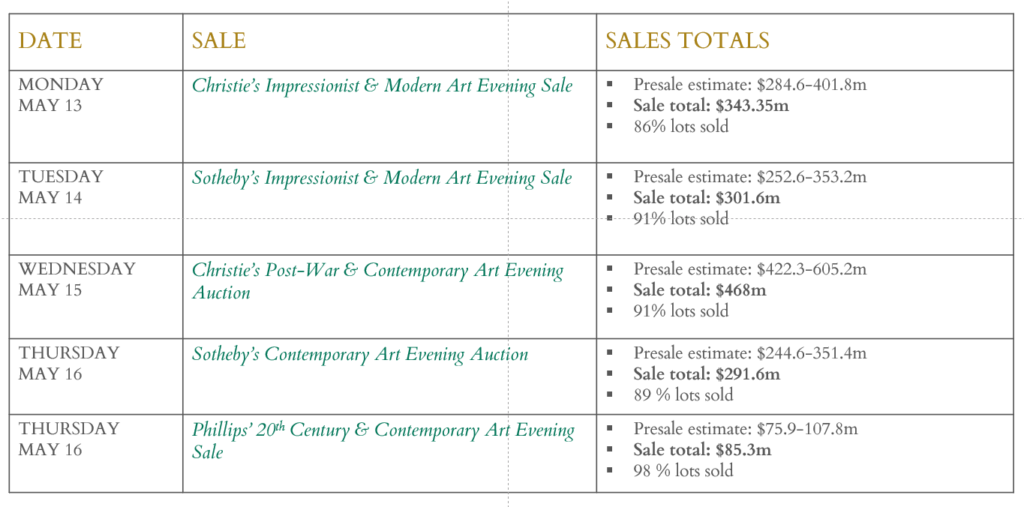At the most recent installment of summer sales, traditionally held in London in June, Phillips instead started the cycle in New York, as part of the now common shifting of auction locations and dates.
Held at their newly opened headquarters, the Phillips sale generated an above estimate $98 million hammer, more than double their 2020 total and up nearly 20% from its May 2019 sale. That being said, it’s important to note Phillips opted not to hold a London sale, pushing their ‘May sale’ to June which no doubt assisted volume. Strong evidence of this was the unusual inclusion of a Winston Churchill painting, which surely was destined for a London summer sale but was moved into their hybrid New York lot list, likely impacting the result, selling on just one bid.
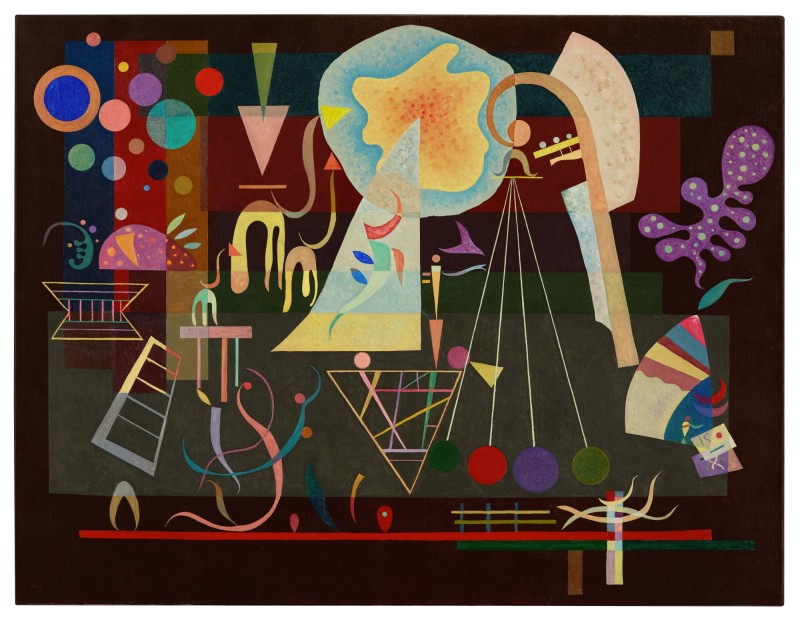
The following week Sotheby’s and Christie’s presented their multitude of cross category evening sales, although in fact held in the afternoon so as to allow for global bids from New York and Hong Kong. Sotheby’s staged a British Art Evening sale, then followed by a Modern & Contemporary Art Evening sale which traversed art history with works by Degas and Monet to Mark Bradford and Julie Curtiss. The top lot of the evening being the 1937 Kandinsky estimated at £18 – 25 million, it sold for £18.3 million hammer (£21.2 million premium). Their eighty-three lot sale totalled a hammer of £130.3 million against a presale estimate of £119.7 – 170.3 million. Twelves lots, however, were withdrawn, some well before the sale and whose presence is now unknown to all but Sotheby’s as the auction house rapidly removed them from their online catalogue where possible. These works totaled well over £10 million in low estimates, which technically results in a below target sale total.
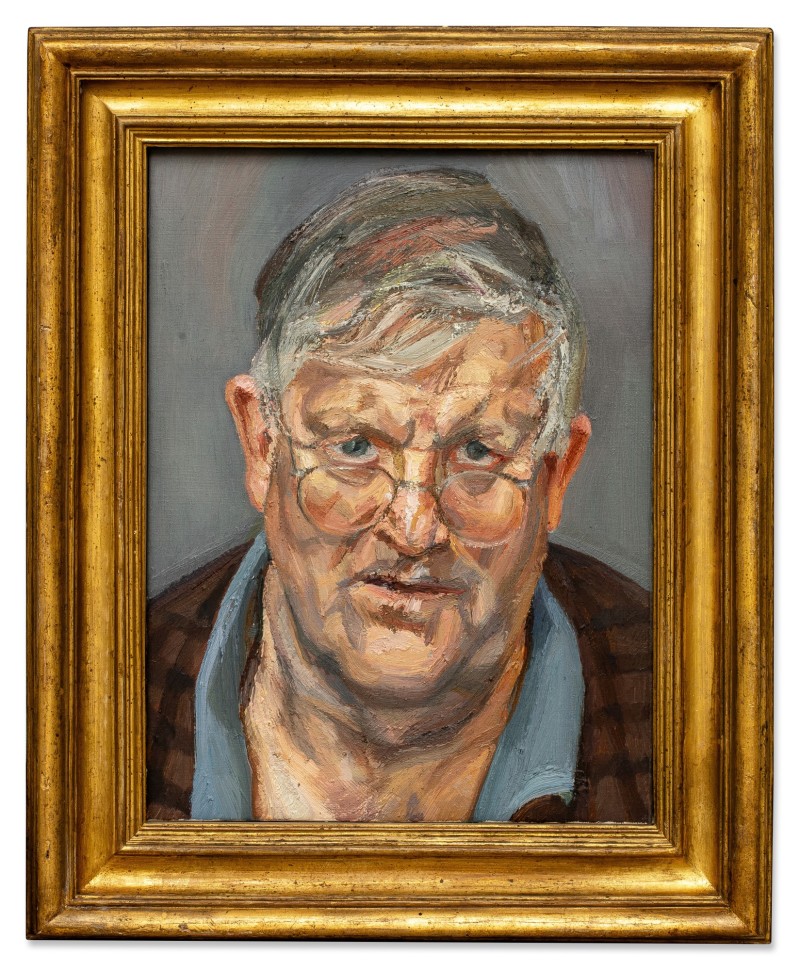
There was strength in the early part of both Sothebys’ evening sales, with deserving lots including Hockney’s Gladioli painting and Freud’s Portrait of David Hockney performing well. The latter for a hammer price of £12.8 million (£14.9 million premium) selling to James Sevier’s client after being chased by more than six bidders through to the top end of the bidding. Towards the second half of both sales, however, bidding began to feel thin with many lots selling on a single bid around or often below the low estimate. Over half of their sale was guaranteed and the lack of deep bidding proved this was required to help ensure their 93% sell through rate.

Christie’s opted to combine the 20th and 21st centuries into one sale with the collection of Francis Gross and a Paris evening sale following on, in the now normal relay fashion. With a total of ninety-four lots across the three sales, and a presale estimate around £114 – 167 million, (not including the four lots that were withdrawn, comprising just over £5 million in low estimate) the sales brought in a total of £119 million hammer. Considering the withdrawn lots, the three sales achieved within the low end of their presale expectations and similarly to Sotheby’s, apart from some key works by Picasso, James Ensor and Bridget Riley, several works sold on just one or two bids. Interestingly none of the Paris lots were guaranteed, compared to over half of the London auction, which resulted in an 87% sell through rate across all three sales. Top lots by value included Picasso’s L’Étreinte (1969) selling for £14.7 million (premium) and a René Magritte, La Vengeance (1936) which sold well above its €6 – 10 million estimate for €14.6 million (premium).
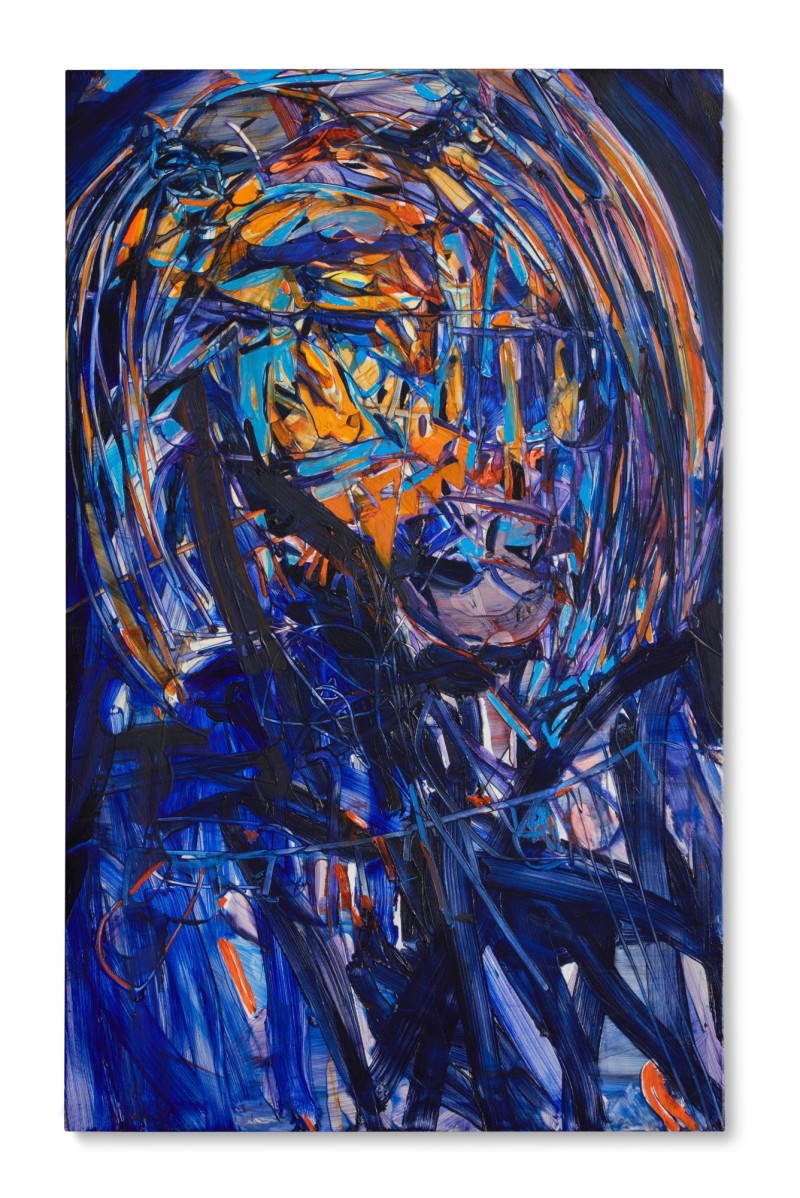
The strength of the Asian market continued to help propel these auctions. Phillips saw strong Hong Kong bidding on several lots, primarily for younger artists. Lot one at Sotheby’s, Jadé Fadojutimi, was chased by almost exclusively Hong Kong bidders and several clients of Patti Wong bid significantly on the higher end lots, notably Degas and Picasso. And similarly at Christie’s, artworks by Condo, Degas, Kusama, Chagall, Miro, Leger, Klee and Stanley Whitney all went to Hong Kong phones, with Asian bidding on over a third of lots in the London segment.
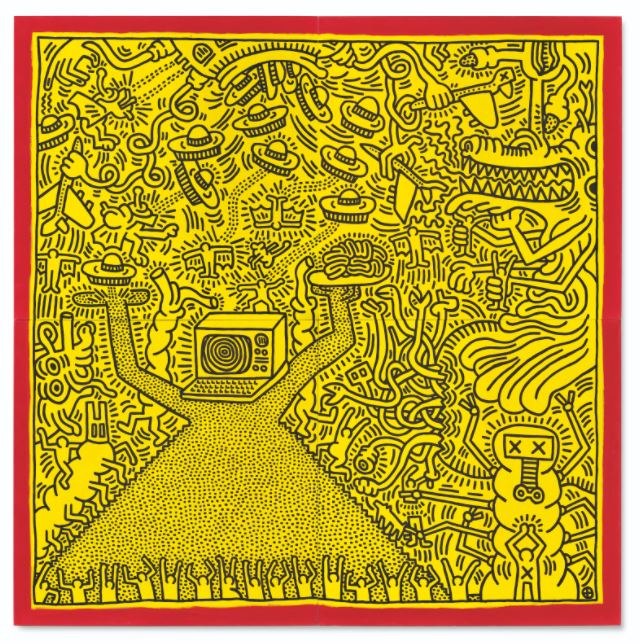
Also of note is the increasing number of lots for which the auction houses are accepting cryptocurrencies. Sotheby’s notionally accepted Ether or Bitcoin for their Banksy Laugh Now painting estimated at £2.5 – 3.5 million, it sold for a single bid at £2 million hammer. Christies also offered this for their 1984 Keith Haring painting estimated at £3.9 – 4.5 million, again selling on just one bid for £3.9 million to the third-party guarantor. Whilst the houses are clearly trying to tailor the works they select for this to a specific clientele, it certainly didn’t have the effect the consignors and houses alike were hoping for and will be interesting to see how this develops in future sales.
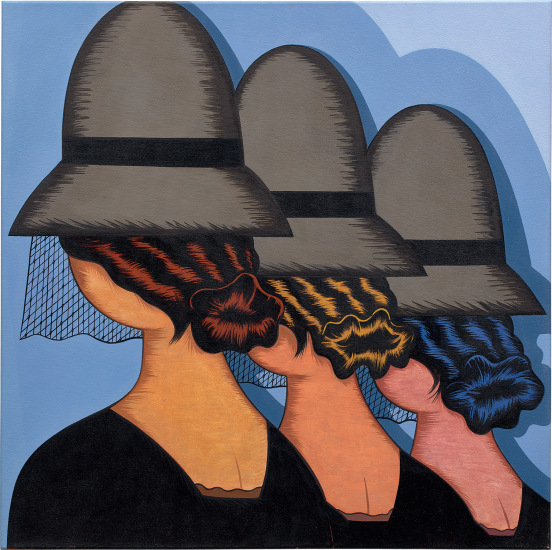
As has been the case over the last several sale cycles, emerging and historically under-represented artists continue to see the bulk of interest. Phillips set a new record for Avery Singer at $4.1 million (premium); Singer’s previous auction high, $3.1 million, was set just a month ago at Christie’s Hong Kong. Records were also set for Julie Curtiss, whose painting Three Widows (2016) sold for $466,200, more than double the $150,000 high estimate, and Titus Kaphar, whose portrait sold for just over $1 million, well above its $400,000 high estimate.
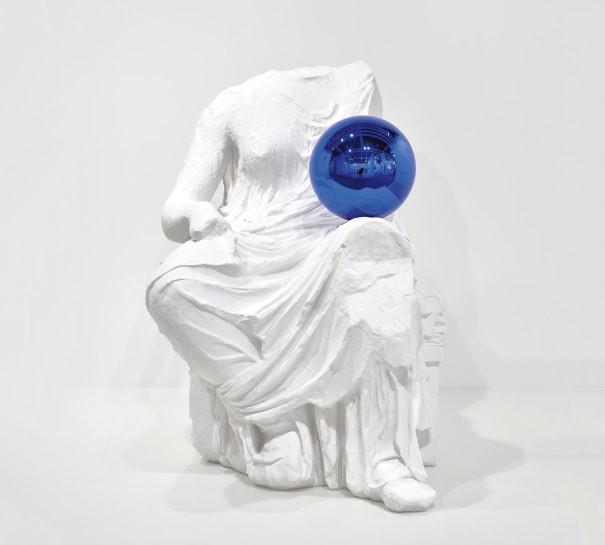
The reduced estimate for Phillips’ top lot, further demonstrated where heat in the market still lies. David Hockney’s A Neat Lawn (1967), was reduced from a low estimate of $12 to $9.5 million, accompanying a last minute third party guarantee, to whom it sold. Also of note in the Phillips sale was Jeff Koons’ Gazing Ball sculpture, surprisingly offered with no reserve, selling for $800,000 hammer ($998,000 premium).
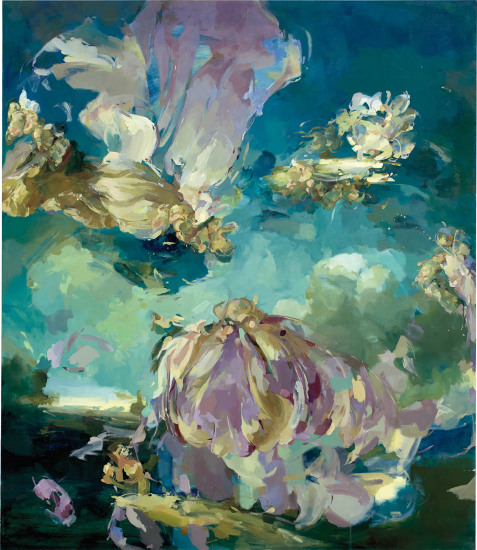
In the current auction climate prices for young, figurative painters are exceeding that of some of the most historically expensive artists at auction, including Koons and Picasso. The auction debut for Flora Yukhnovich, estimated at $60,000 – 80,000 in the Phillips day sale, being a prime example, selling for an astonishing $950,000 hammer ($1.2 million premium). With only five solo shows to date and the artist having never received an institutional exhibition, the level of speculative buying has reached new heights.
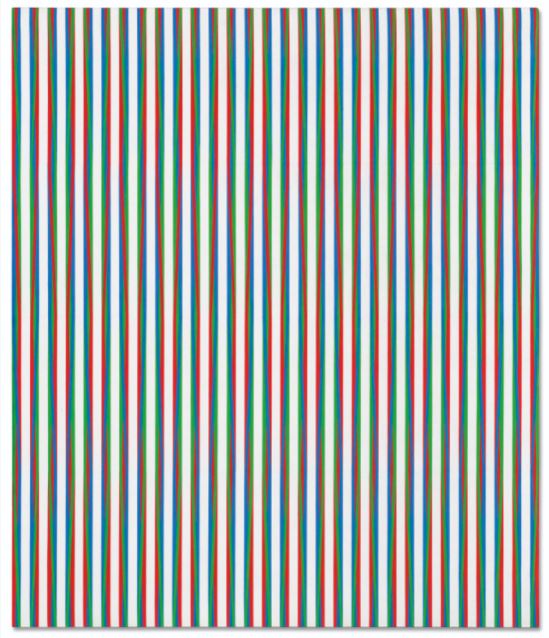
During the London sales the situation was similar but less aggrandized due to the material, instead emphasizing the limited demand for the more traditional areas of the Impressionist & Modern market. At Christie’s, an exceptional work by Kirchner, Pantomime Reimann: Die Rache der Tänzerin (1912) sold on just one bid for £6 million hammer, whereas works by George Condo, Elizabeth Peyton and Bridget Riley experienced much more global and spirited bidding. Riley’s Zing 2 (1971) successfully sold for £3.3 million (premium), clearing the high estimate of £2.2 million and marking the second-highest auction price for Riley to date.
The next marquee sale cycles in October are again traditionally held in London and then Paris, adding to the pressure for the houses to swiftly gather more material. Brexit and Covid restrictions seem to have weakened Europe’s auction positioning but perhaps some of the stronger consignments have been pushed towards the ‘Frieze slot’, typically the most major calendar moment for the London art scene. The results of October will help inform how some of the trends seen during these sales will develop. What is in no doubt, however, is the strength of the Asian auction market. Compared to a 43% drop in New York and 38% decline in London, Asia’s sales fell just 3% in 2020. With almost $900 million worth of art sold to date, 2021 is poised to be another record for the region.
Image 1: Image courtesy Sotheby’s; Image 2: Image courtesy Sotheby’s; Image 3: Image courtesy Christie’s; Image 4: Image courtesy Sotheby’s; Image 5: Image courtesy Christie’s; Image 6: Image courtesy Phillips; Image 7: Image courtesy Phillips; Image 8: Image courtesy Phillips; Image 9: Image courtesy Christie’s
FURTHER READING
- What Will Collectors Buy in 2022?
- Ten Reasons “Going in Alone” at Auction is a Mistake
- Protect Your Investments While Divesting Tangible Assets
A welcome return to the regular auction schedule saw Christie’s and Sotheby’s execute five major evening sales across three nights totalling $1.29 billion, with Phillips opting instead to hold their New York sales in June at their new headquarters. Despite Christie’s merging their Post-War & Contemporary and Impressionist departments, previously holding just one evening sale, the auction house held two 21st and 20th Century evening sales, proving that the sale categories continue to be malleable depending on the material the houses bring in. Despite heavy investment in their live streaming technologies from both sides, Sotheby’s format still triumphs in terms of streamlining global bids from multiple desks. Most refreshing, however, was room bidding on several lots during the Sotheby’s sale, fielded by auxiliary auctioneer Quig Bruning. Diego Rivera’s Retrato de Columba Dominguez de Fernandez (1950) even sold to a woman in the room for $7.4 million (premium) and marking a promising step forward for the next round of sales.
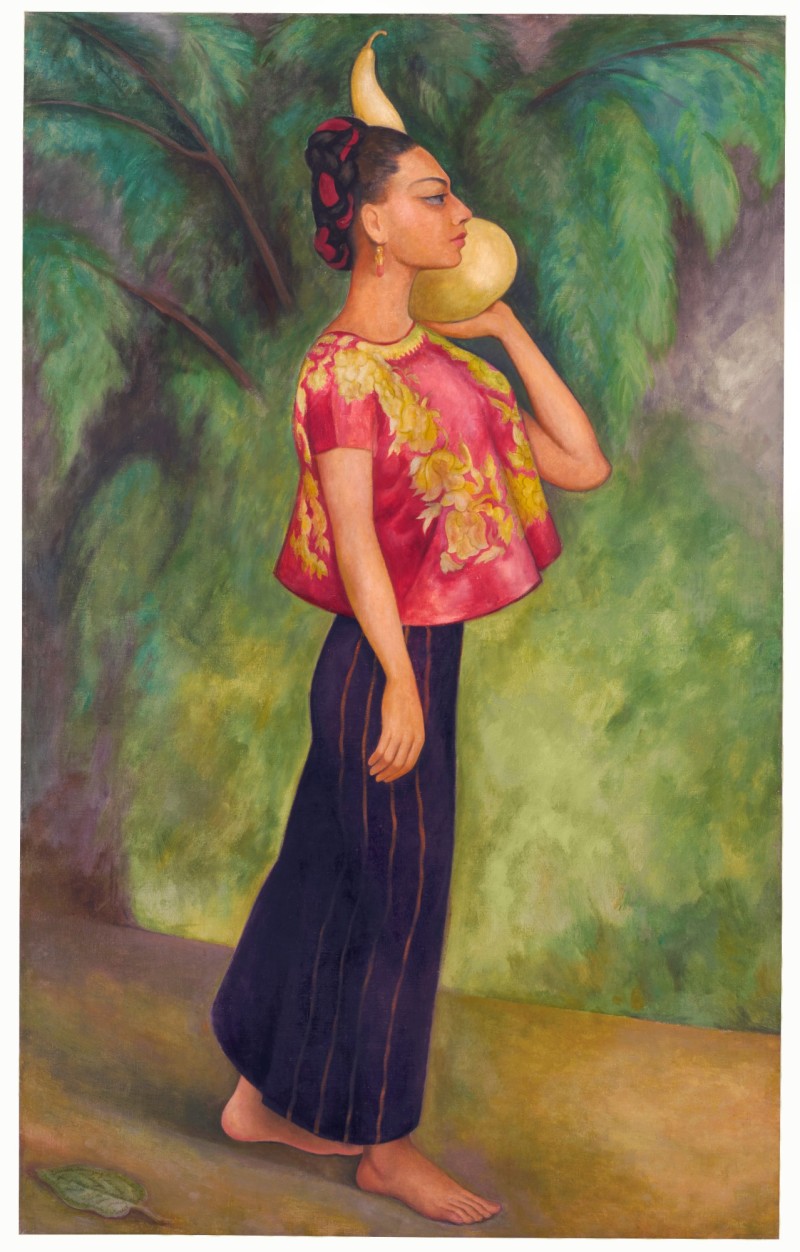
Despite Christie’s achieving an overall higher turnover with $691.6 million (premium) versus $597 million (premium) for Sotheby’s, in terms of material it felt as if Sotheby’s had the lead for the week. This was largely due to the stand alone Marion Collection sale which achieved $157.2 million (premium). Despite totalling towards the lower end of the presale estimate due to four unsold works, the sale saw new auction records achieved for Kenneth Noland, Larry Rivers and Richard Diebenkorn and impressive bidding on the major Warhol, Elvis 2 Times (1963), whose market has been somewhat subdued in recent years. Estimated at $20 – 30 million, the double portrait sold for $32 million hammer ($37 million premium). Christie’s also had comparatively healthy Warhol results in their 20th Century sale later in the week, with both lots reaching around their high estimates.
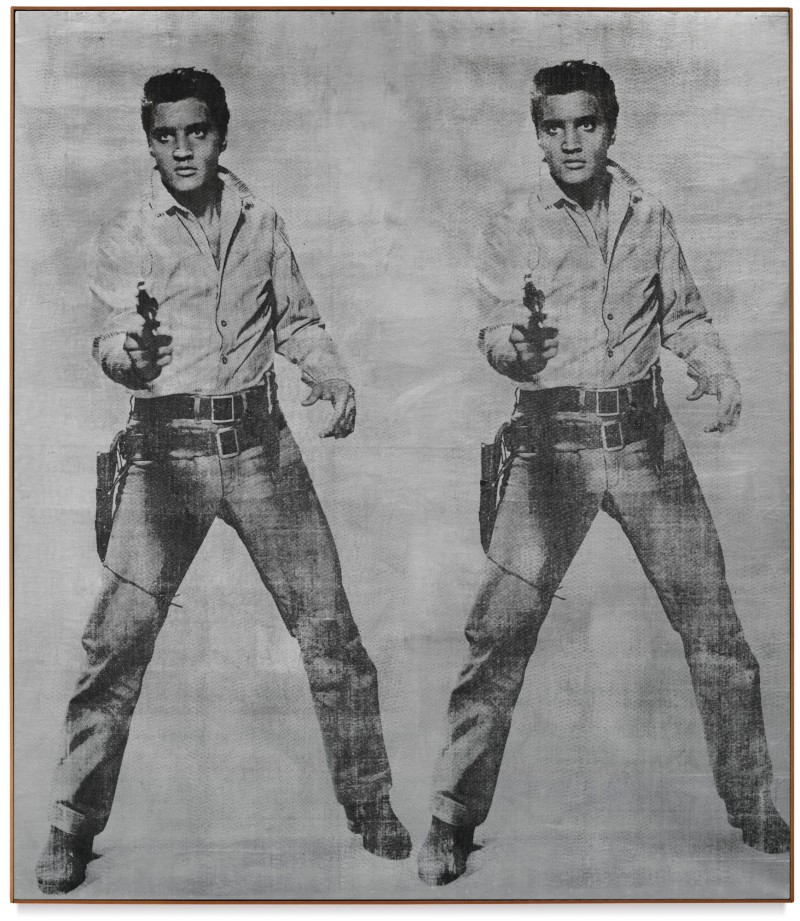
On the completely opposite end of the art historical timeline, following the recent headline grabbing Beeple price, Christie’s unsurprisingly opted to include an NFT artwork in their 21st Century evening sale which no doubt boosted their bottom line as 9 Cryptopunks sold for $16.9 million (premium), estimated at $7 – 9 million. A few weeks before Phillips and Sotheby’s had both followed suit, holding their own standalone NFT auctions selling for several million dollars. While their value is currently the subject of much speculation, with the new evening sale status NFTs seem to be gathering staying power, at least for the short term.

In the spirit of technological shifts, the consignor and Sotheby’s opted to allow their Banksy Flower Thrower painting to be paid for in cryptocurrency which undoubtedly boosted the extraordinary result hammering at $11 million ($12.9 million with premium) to a west coast collector, against an estimate of $3-5 million. Notably Sotheby’s required their buyer’s premium to be paid in US dollars.
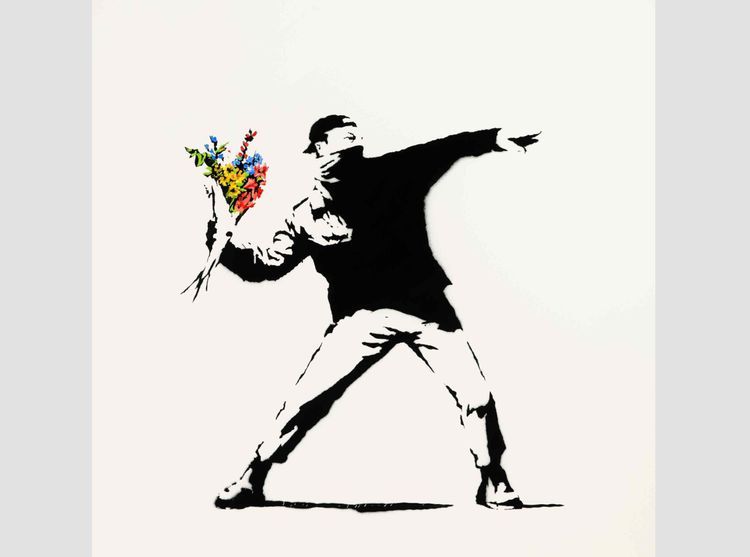
Strength of the Asian market continued and in terms of bidding roughly a third of lots across all the sales saw bidding from Asia. Christie’s reported that the Asia-Pacific area represented 25% of buyers from their 21st Evening sale and 20% in their 20th Century evening sale. Key lots by George Condo, Leonor Fini, Picasso’s Femme assise en costume vert and a Monet still life, among others, were all sold to phone bidders from Sotheby’s and Christie’s Hong Kong desks.

The major turnover generator of the week for both houses was Jean-Michel Basquiat. Christie’s lot, In this Case (1983) sold by Valentino co-founder Giancarlo Giammetti, went beyond its unpublished pre-sale estimate of around $50 million to a New York phone bidder for $81 million hammer ($93.1m with premium). Sotheby’s likely expected their top lot Versus Medici (1982) to do better but it sold to Lisa Dennison’s client Steve Wynn for $44 million hammer ($50.8 million with premium).

The result for Picasso’s Femme assise près d’une fenêtre (Marie-Thérèse) (1932) also showed the continued strength in long term value for the artist. Previously selling for $44.8 million in 2013, this time it went to Vanesso Fusco’s client on the phone for $90 million hammer ($103.4 million premium), the only lot of the week to sell in excess of $100 million including fees.
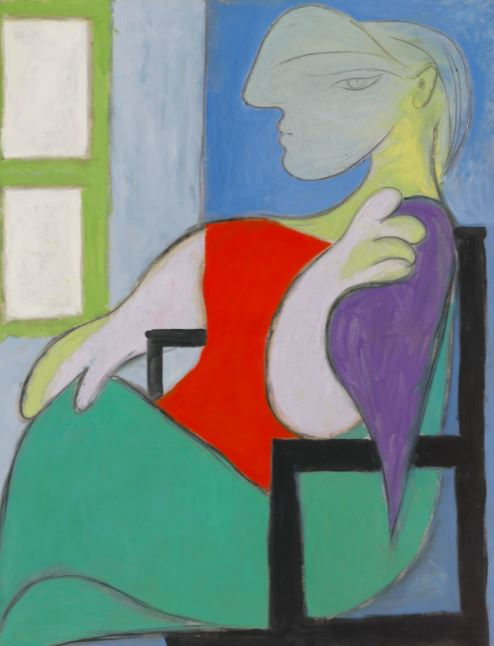
Despite some healthy bidding for Basquiat, Picasso and the major Monet waterlilies at Sotheby’s, these solid results were for deservedly A-grade material. Whereas works by other auction stalwarts including Gerhard Richter, Christopher Wool and Cy Twombly, among others, primarily sold on one or two bids. This is both a reflection of the continued selectiveness of the market as well as a shift in taste to the new generation of art stars, albeit at lower price points, where lots saw the most competitive bidding. Five artists under the age of forty-five set new auction records, notably Nina Chanel Abney ($990,000 premium), Lynette Yiadom-Boakye ($1.95 million premium) and Salman Toor ($867,000 premium) to name a few. Another noteworthy price from the week included a spectacular and deserved new auction record for Robert Colescott’s George Washington Carver Crossing the Delaware: Page from an American History Textbook (1975), selling for $15.3 million (premium) above the $12 million high estimate. The result was over sixteen times higher than the previous record of $912,500. The work sold to the Lucas Museum of Narrative Art in Los Angeles.

Overall, the results proved a healthy, recuperative global art market, following the past twelve turbulent months. Phillip’s delay to June may have assisted in slightly curbing supply but the successive slew of auction records and excellent sell through rates speak for themselves. The auction houses continue to show excellent adaptability to help ensure this, whether it be last minute lowering of reserves, withdrawals or the securing of guarantees. With 78% of works guaranteed by value in both Christie’s evening sales and 48% and 57% respectively in Sotheby’s Contemporary and Impressionist & Modern sales, these remain essential tools for the sustained stability of the auction market.
Image 1: Image courtesy Sotheby’s; Image 2: Image courtesy Sotheby’s; Image 3: Image courtesy Christie’s; Image 4: Image courtesy Sotheby’s; Image 5: Image courtesy Sotheby’s; Image 6: Image courtesy Christie’s; Image 7: Image courtesy Christie’s; Image 8: Image courtesy Sotheby’s
FURTHER READING
- Morgan Long Speaks with Barron’s About Guaranteed Works at Spring 2023 Auctions
- Watch The Educated Eye: How to Navigate a Multi-Category Collection at Auction
- May 2023 Auction Season: Our Team’s Top Picks & Insights
23rd March saw the first major evening auctions of 2021 following an unprecedented year of upheaval and change. The auction houses attempted to centre their sales around the March London calendar slot, albeit later, in an effort to restore the old schedule. Upon the eventual announcement of the timeline for the loosening of social controls, Phillips decided to delay their 20th Century and Contemporary sales to mid-April to allow for more ‘In person’ viewings for their sales. Sotheby’s and Christie’s chose to continue with their schedule which meant private collectors were unable to physically view the sale but art trade were. In keeping with the houses’ ever creative approach to our current situation, on some occasions they opted to bring works to local collectors, to help stimulate as much pre-sale interest as possible given the circumstances.
All of the houses opted for mixed category evening sales, perhaps a signal insert that they struggled to get consignments, however, not a trend we see declining, having long been in play before Covid. The Leonardo sale at Christies being a key turning point, it is a fantastic stimulus for other areas of the market, including Old Masters and Modern British, that lack the same marketing budget and often command less global attention. The strategy paid off in both cases. Sotheby’s Modern Renaissance sale, with artworks from 1500 to present day, totalled £81.6 million (hammer) against a presale estimate of £60- 86.5 million and 87% lots sold. Whilst Christie’s totalled £100.5 million (hammer) against the presale estimate of £66.6 – 96.7 million. Also further bolstered by a £40.4 million (hammer) sale total from Olivier Camu’s Surrealist sale, traditionally held this time of year.
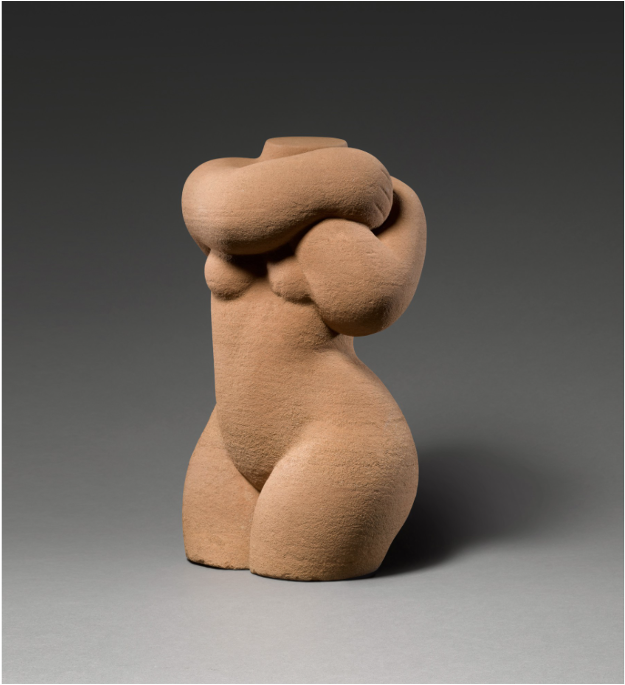
The mixed category format facilitated some extraordinary prices for artists not traditionally included in the evening sale setting. Notably a new record for British sculptor Frank Dobson whose work rarely comes to auction. The female torso which once belonged to Alberto Giacometti, surpassed its estimate of £250,000 to sell for £2.04 million (including premium), smashing the 2005 record of £338,500 (premium). Czech artist František Kupka, known for his association with Kandinsky and Malevich also reached a new record of £7.55 million (including premium), tripling the low estimate.
Despite March usually being a London slot, both houses decided to spread their sales across multiple locations, in keeping with the international relay style auction approach developed last year. Sotheby’s held a Paris Impressionist and Modern auction before the London sale, in an effort to mirror the volume offered by Christie’s with their Surrealist sale. Totalling €30.4 million above the presale estimate of €19.3 – 28.9 million, the sale was a remarkable success with 91% lots sold. The relay tactic, stitching Paris evening sales to marquee auction calendar moments, seems to be attracting significant global bidding. To attest to the interest in the Sotheby’s Paris sale, the London sale start time was delayed due to the high volume of bidding in the Paris segment, with even in person room bidding for a Renoir sculpture with harked back to an almost immemorable time. The most notable result was €13.1 million (premium) for an 1887 Van Gogh canvas, against an estimate of €5 – 8 million, acquired by the Reuben family. Despite the slight hiccup with a phantom online bidder, the work saw bidding from New York, Paris, London and Hong Kong, proving that Paris is a solid stage for major lots.
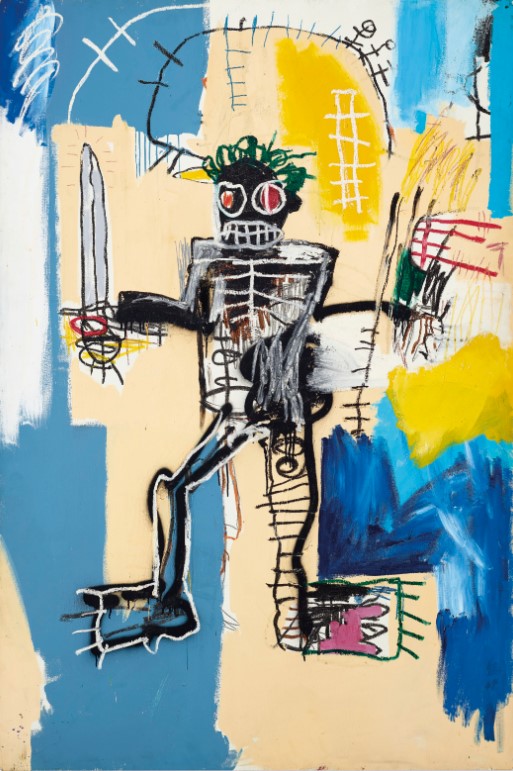
72 x 48 in. (183 x 122 cm.). Sold for HKD 323,600,000 in We Are All Warriors: The Basquiat Auction on 23 March 2021 at Christie’s Hong Kong.
Christie’s also opted to hold a one lot Basquiat Hong Kong auction, despite technically being taken by Jussi Pylkkänen from the rostrum in London, the sale was indeed in Hong Kong dollars. Belonging to collector Aby Rosen, the 1982 warrior painting saw three bidders from New York and Hong Kong compete before it went to Jacky Ho in Hong Kong. It was a solid indicator of the continued appetite Basquiat, this latest result marked a $30 million profit on the seller’s 2012 investment; also providing positive foundations the forthcoming 1982 Versus Medici painting to be sold at Sotheby’s in New York in May, estimated to fetch between $35 – 50 million.
The Christie’s consignment hammered within estimate at HK$280 million ($36 million) or HK$323.6 million ($41.8 million) including premium, which ultimately beat the recent Richter, to become the most expensive piece of Western art sold in a Hong Kong auction. The success of the lot was a sign of the continuing strength of the Asian market off the back of seventeen records at Christie’s December Hong Kong auction and Art Basel’s recent Art Market report confirming China overtook the US to become the largest auction market in 2020. Significant Asian bidding on roughly a quarter of the lots across the sales attested to this and to make sure these sales remained accessible to global collectors these ‘evening sales’ were in fact held at 1 and 3pm respectively to allow for more social hours.
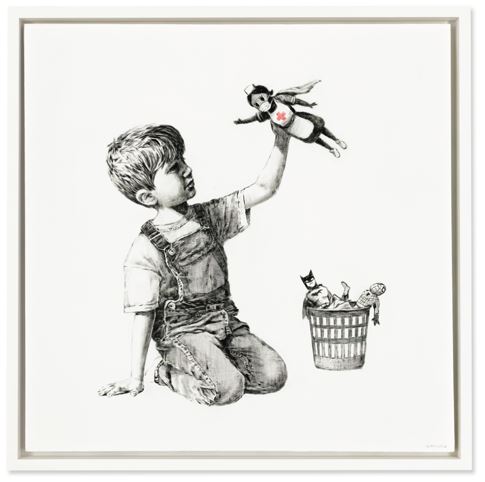
The Banksy market showed no signs of slowing with a new auction record at Christie’s for a painting donated to Southampton hospital, sold to raise fund for the NHS. The work hammered for a staggering £14.4m hammer (£16.76 million with premium) against an estimate of £2.5 – 3.5 million and was chased by six bidders before selling to Tessa Lord’s client on the phone. Sotheby’s also reached an extraordinary price for a signed edition of Girl with Balloon selling to an online bidder for £1.2 million (premium). Despite being catalogued as an artist proof edition of eighty-eight, it belongs to a wider edition of 150, and an unsigned edition of 600, and speaks to extreme level of demand for Banksy at the moment. Interestingly, these works saw no US bidding with collector interest based solely in the UK or Asia.
In demand primary market artists also continued to see the most spirited bidding with several artist’s auction debuts selling for well beyond their estimates. Despite Issy Wood’s ‘auction debut’ in fact taking place the day before with a successful result via Loic Gouzer’s fair warning app, herself alongside Joy Labinjo, Amoafo Boako, Claire Tabouret, as well as continued demand for last year’s breakout auction star Matthew Wong all ignited the early parts of the sales.
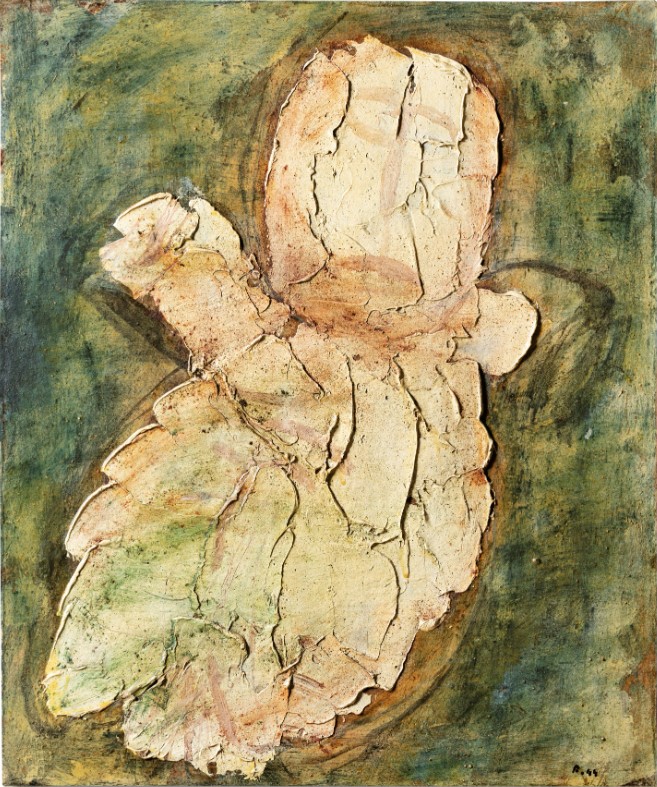
An overall sense from the last few auctions was that bidding was thin for lots at higher price points and from more traditional or established segments of the market. And whilst this rang true for some pieces from these sales, including a Francis Bacon selling on just one bid at £4.3m with a rumoured estimate of £8-12m, several lots did extremely well. Perhaps reflecting that collectors feel more confident transacting at these price levels now the art market has weathered the past 12 months and there is some light at the end of the tunnel. Two major Picasso paintings at Christie’s both sold significantly above their last auction results. Works by Fautrier saw serious bidding across both houses, with Christie’s reaching a new record and Olly Barker at Sotheby’s taking some twenty minutes over a 1966 painting which sold for nearly quadruple the high estimate to Martin Klosterfelde’s client for £3.1 million (premium).

Other high prices included Edvard Munch’s Embrace on the Beach, which sold for £16.3 million (premium) to a Hong Kong client, above a £12 million high estimate and an Arshile Gorky landscape, Garden in Sochi, set to sell for a high estimate of £2.8 million, instead it sold for £8.6 million to Bame Fierro March’s client.
These results proved encouraging for the first marquee moment of the year for the art market. The three-month gap certainly helped build appetite and demand. The continued lack of physical art fairs works in the favor of the auction houses, the sheer size of their organizations has allowed them to tour major artworks, arrange delivery for physical viewings and remain open for trade which has offered them a significant advantage to the now monotonous experience of an online viewing room. As the year progresses it will be interesting to see if this level of bidding will be sustained but with such solid infrastructure in place to conduct these global sales with ease, there is an overwhelming sense that the location of sales is no longer a barrier to bidders. Collectors are attracted to the works no matter where and this yields excellent results as they continue to capture the interest of the international collector base.
Image 1: Image courtsey Sotheby’s; Image 2: Image courtsey Sotheby’s; Image 3: Image courtsey Christie’s; Image 4: Image courtsey Christie’s; Image 5: Image courtsey Sotheby’s; Image 6: Image courtsey Sotheby’s
Further Reading
With the year drawing to an end, the auction houses recently rallied for one last push with five major evening sales held between New York and Hong Kong across Phillips, Sotheby’s and Christie’s over the first two weeks in December. Representing what would have been the usual November slot, these sales were pushed back to December. However, despite Sotheby’s opting to move their ‘November sale’ forward to October, they curiously bookended this period with yet another evening auction, this time mixing Impressionist & Modern and Post-War & Contemporary lots, a tactic in line with Christie’s recent approach.
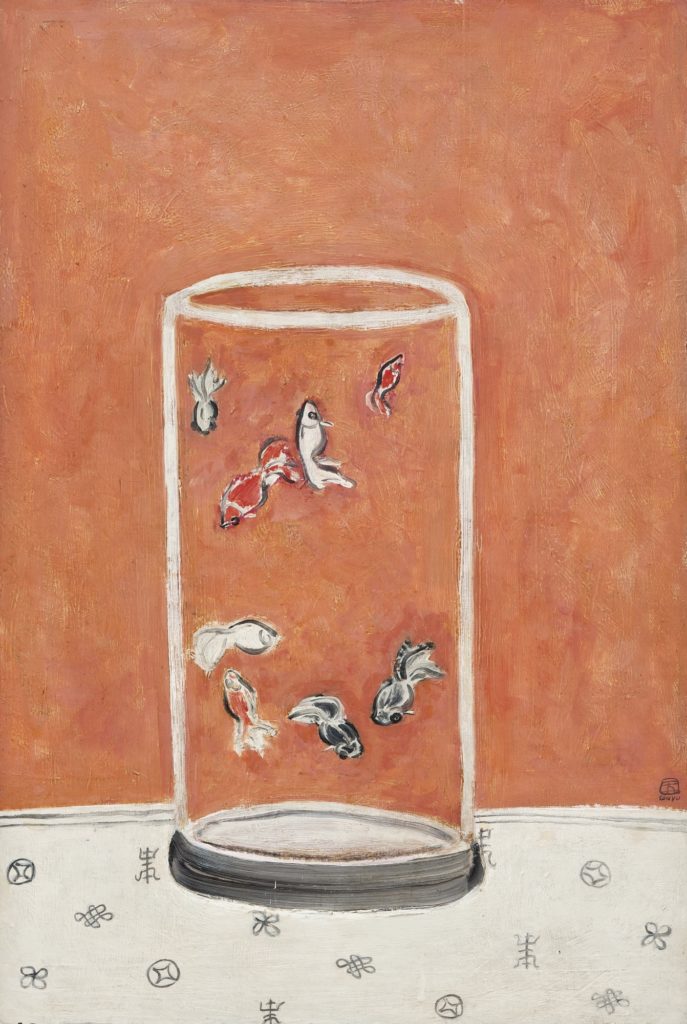
The Hong Kong sales showed remarkable strength and considerable depth of bidding when compared to the New York segments. Christie’s Hong Kong first held a fifty-eight lot Modern & Contemporary sale and a standalone one lot Sanyu sale. With all but one lot selling, the sale surpassed its presale estimate by 20% bringing in $132 million. This was followed a few hours later by the 20th Century department holding a ‘global sale’ starting in Hong Kong then moving on to New York, in a relay style similar to what we saw in July, totalling $119.3 million solidly within their presale estimations.
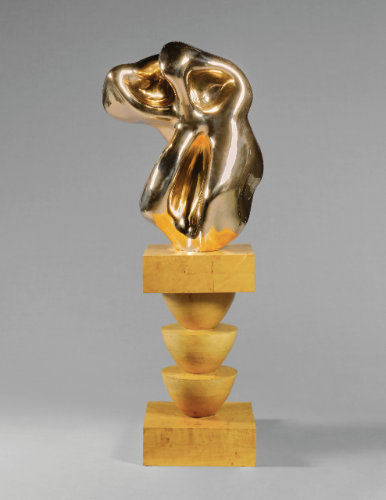
This appeared a risky gambit with major works by several artists such as Zao Wou-Ki, George Condo, Yoshitomo Nara included in both the Modern & Contemporary and One Sale Hong Kong segment. However, this overlapping of content did not seem to slow the appetite one bit, the One Sale Hong Kong was 100% sold. As Christie’s moved to their New York segment, bidding from Hong Kong continued long into the evening, including a Renoir painting towards the end of the sale which meant Asian bidders were active at 11.45 pm local time. More surprising, a sculpture by Hans Arp sold to a Hong Kong bidder in the room for $2.4 million including premium, as Georgina Hilton bid virtually for the collector with Adrian Meyer in New York.
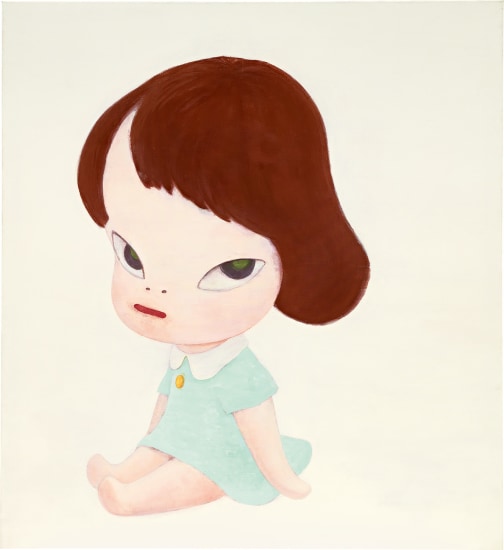
Phillips Hong Kong opted to hold their sale in partnership with Poly Auctions, one of mainland China’s biggest auction houses. The strategy paid off with only two unsold lots, the sale surpassed its presale estimate by around $10 million. Poly crucially expanded the bidding to mainland China which helped increase competition with Phillip’s Hong Kong bidders and ultimately pushed the price on several lots. Buyers leapt bidding increments by as much as HK$5 and HK$6 million at times. Most notably, a major 1995 painting by Yoshitomo Nara, initially chased by seven bidders, was fought over by Nick Hilton with Phillips Hong Kong and Blair with Poly Beijing, resulting in the work doubling the low estimate and selling for $13.3 million. It eventually sold to the same phone buyer that won the Matthew Wong and set the second highest price for the artist. Interestingly the partnership with Poly also led to more online bidding than we had seen in a while, clients from Singapore, Taiwan, Samoa and Korea, all underbid online for several of the top lots.
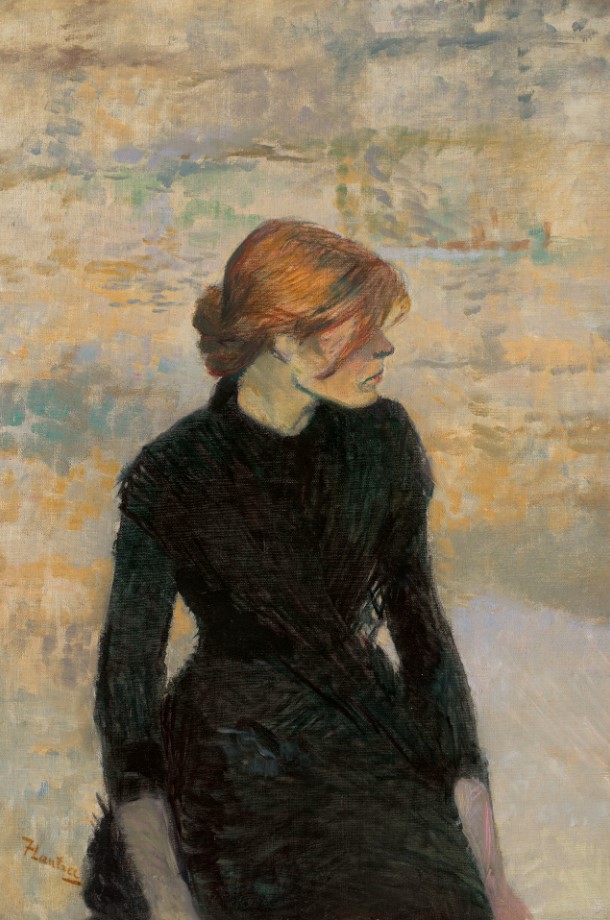
It was a very different feel during Christie’s New York One Sale segment which had five unsold lots compared to zero from the Hong Kong section and more than half of their lots sold on or below the low estimate. Their Post-War & Contemporary day sale also failed to reach the low end of its presale estimate. Intriguingly, the star evening sale lot was not a Contemporary work but a Toulouse-Lautrec, which had belonged to automotive head Henry Ford II. This attracted at least five bidders, all in New York, before selling well above estimate for $9 million including premium. 43% of the sale was guaranteed by value as the success of the sales continues to be assisted by financial backing.
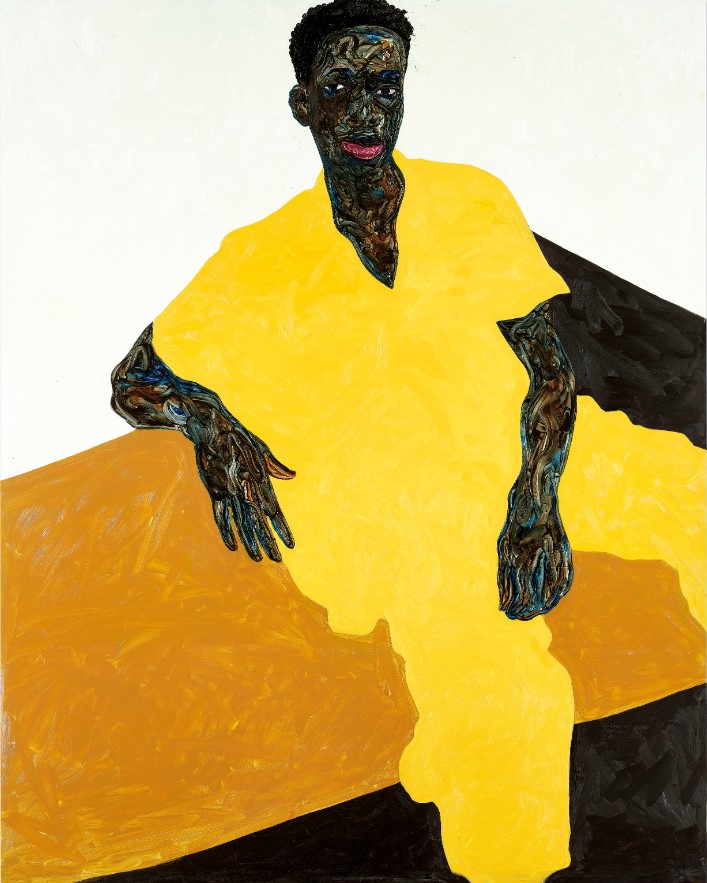
Throughout the sales a number of artist records were achieved. At Phillips both in Hong Kong & New York new records were set for Matthew Wong, Bernard Frize, Lucas Arruda, Emily Mae Smith, Vaughn Spann, Jadé Fadojutimi, Kehinde Wiley, Mickalene Thomas and Amy Sherald. Several artist records were achieved with Christie’s as well, including Salman Toor (surpassing the record Phillips set earlier that day) Georges Mathieu, Nicholas Party, Joyce Pensato, Dana Schutz, Amoako Boafo and Shara Hughes, amongst others (interestingly both the Boafo and Hughes were acquired by the same collector). And Sotheby’s reached a new record for Barkley L. Hendricks. The notable theme running through this list of records being major success for black artists and less well established artists, as ever increasing speculative buying rages on.
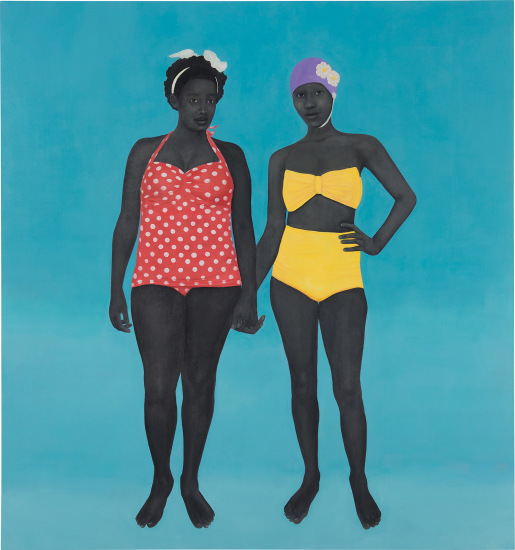
Phillips New York sale had significant weight in this area which contributed to the success of their evening sale, in disparity with the Christie’s New York and Sotheby’s sales being predominantly focussed on the traditional canon. Phillips achieved an extraordinary price for Amy Sherald, only the second work to come to auction the painting sold for $4.3 million with premium against an estimate of $150,000 – 200,000. Contrastingly, the top priced lots by evening sale regulars such as Jean-Michel Basquiat, Donald Judd and Clyfford Still saw more muted bidding. But their top lot by David Hockney did see the artist’s highest price for a landscape, selling to Cheyenne Westphal’s client for $41.1 million including premium.
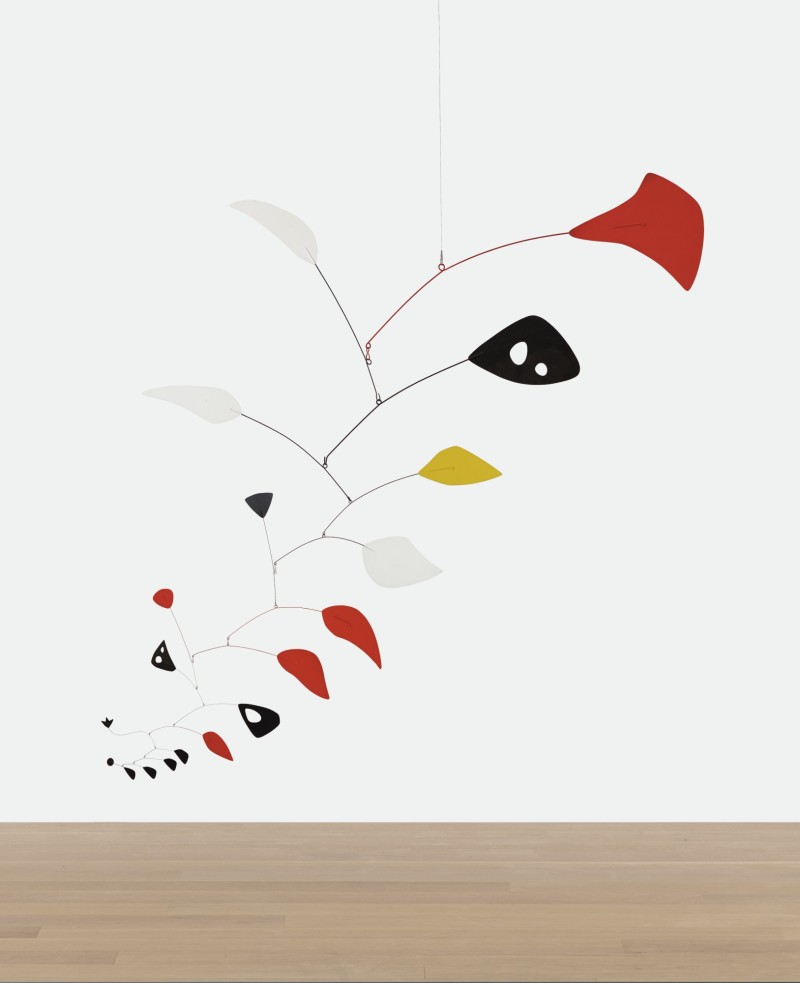
Sotheby’s only had two lots by ‘emerging’ artists and this affected the level of activity in their sale. Before the sale even began, they withdrew five lots with a combined low estimate of $10.1 million which perhaps attests to whether the new mixed category strategy paid off. For the remaining lots in the sale bidding was subdued bar for the expected Hendricks, Wong and remarkable Calder, their top selling lot of the evening. Some last-minute guarantees were put in place at half of the low estimate for works by Van Dongen and Achipenko. This benefitted their sell through rate but affected the bottom line.

Overall, Hong Kong showed considerably more vigour than New York, clearly the Asian economy has weathered recent events better than the US. However, Phillips New York’s results were encouraging, indeed it was the house’s highest ever evening sale total in that category. Evidently the market is currently buoyed by young artists and a sale tailored to this current demand is what’s required to see active bidding. Restrictions over seeing works in person continue to fuel this, the due diligence requirements for a 1950s Ab-Ex painting remain very different to a recent primary market piece, as well as the obvious economic factors. Volume continues to be another feature, the bulk of ‘marquee’ evening sales over the last few months is affecting demand. With the promise of yet another ‘major’ sale around each corner what is to stop collectors holding out and waiting to see what the market offers down the line. Hopefully, the break between now and the next round of London sales will bring much needed respite.
It will be interesting to see how the auction houses approach the next six months given the recent dramatically changed schedule. However, generally the overall strength in the performance over the past nine months has been impressive given the circumstances.
Image 1: Image courtesy Christie’s; Image 2: Image courtesy Christie’s; Image 3: Image courtesy Phillips; Image 4: Image courtesy Christie’s; Image 5: Image courtesy Christie’s; Image 6: Image courtesy Phillips; Image 7: Image courtesy Sotheby’s; Image 8: Image courtesy Sotheby’s
Further Reading
- The Asking Price: Understanding Value 1
- The Asking Price: Understanding Value 2
- Looking Forward: Ten Art Market Predictions for 2023
Christie’s freshly minted relay sale, ONE, was hosted by live auctioneers simultaneously in Hong Kong, Paris, London and New York on Friday 10th July 2020. Consolidating the entirety of Christie’s top tier summer auctions into a single event, the sale demonstrated the potential of a defensive commercial strategy prioritising quality over volume. While a handful of lots were withdrawn (presumably due to lack of interest), the house achieved remarkably solid sell-through rates of 94% by lot and 97% by volume.
Touted as a ‘global’ relay, more than half the lots were sold from America – still the world’s most important market – with relatively tokenistic clusters held in Hong Kong, Paris and London. That said, each location conformed in a fashion to historical type. Hefty works with hefty guarantees were reserved for New York, while estimates in Paris were more reasonable. Some limited local inflection was further evidenced, for example, by the Ben Nicholson sold in London, and the more expensive Zao Wou-Ki offered in Hong Kong.
More than a third of the sale was guaranteed, many of which were subsequently passed on to third parties. This enabled Christie’s to consign A / A+ grade works, with few of inferior quality. The sale also sensibly favoured works which reproduce well online, engendering a sense of confidence in buyers unable to view in person.

Consolidating an entire auction season into a single sale allowed for a handful of more unusual contrasts. Jean Prouvé’s ensemble (1946 – circa 1955) (Design) and Théo van Rysselberghe’s Barques de pêche–Méditerranée (1892) (Impressionist and Modern), comprised a sale with notable gravitas which nonetheless concluded with Maurizio Cattelan’s drowned, polyurethane figure Daddy Daddy (2008). Eliding three distinct auction categories worked solely on the basis of the strength of the works offered. Lesser material would not bear such a disregard for art historical lineage or classification, although it demonstrates how far ‘cross-collecting’ has progressed as a commercial strategy for the auction houses.
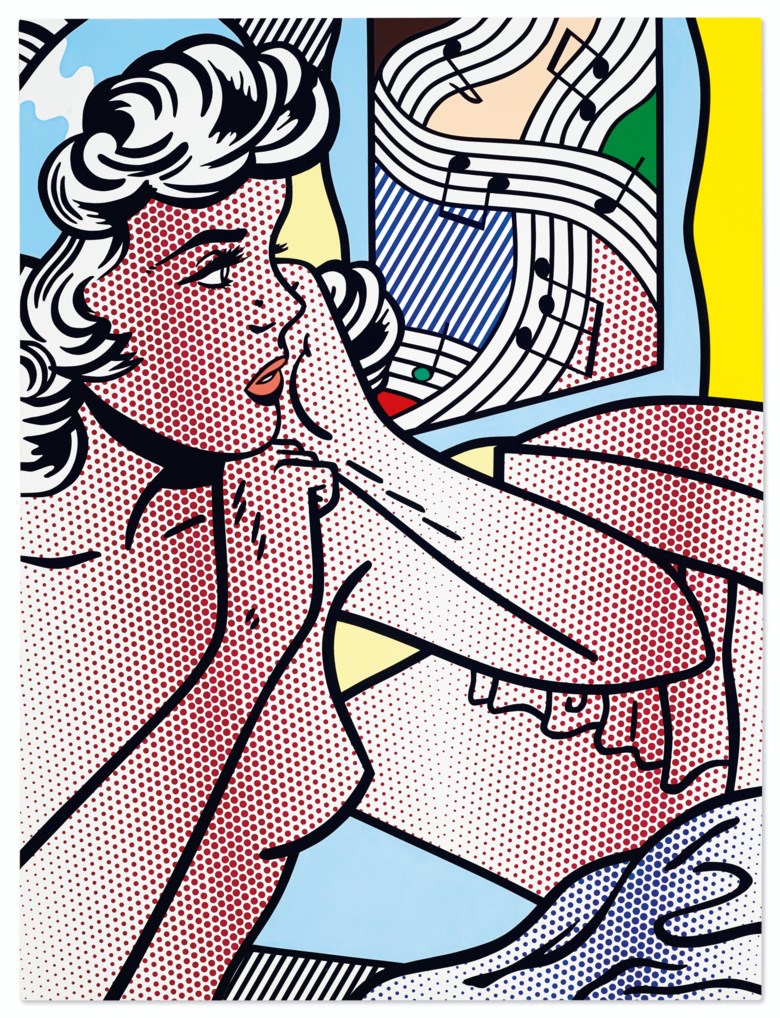
Making USD 420 million in total, the sale’s top lot was Lichtenstein’s late Nude with Joyous Painting (1994) which made USD 46,242,500 with fees and, impressively, auction records were set for seven artists. In Hong Kong, Yellow Quadrangle (1959) by Takeo Yamaguchi made HKD 15,125,000 against an estimate of HKD 2,000,000 – 3,000,000, while George Condo’s Force Field (2010), made HKD 53,150,000 against an estimate of HKD 18,000,000 – 28,000,000 (final prices include fees, estimates do not).
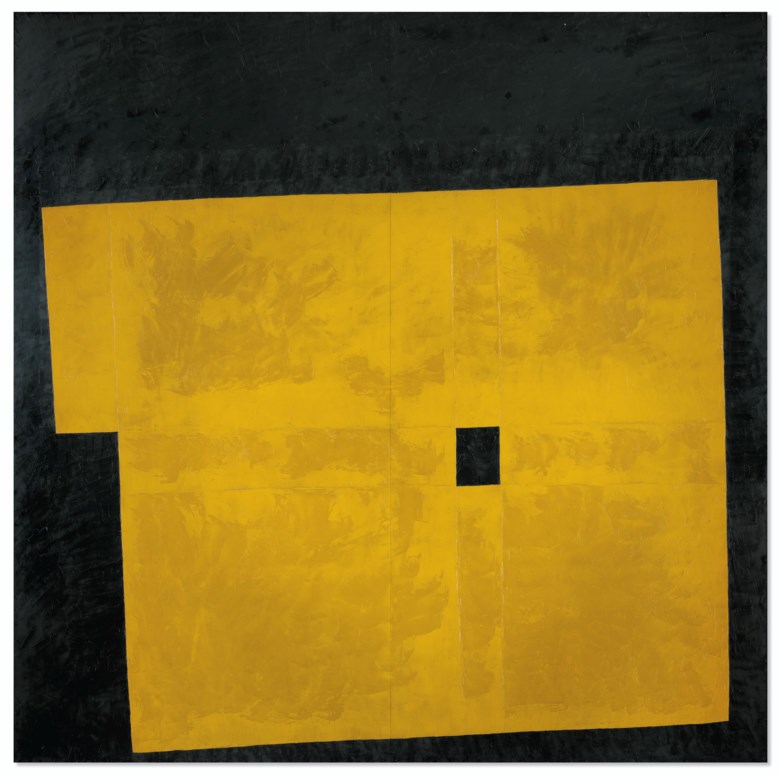
New York’s saleroom saw new auction records for Complements (2004 – 7) by Brice Marden, making USD 30,920,000 against an estimate of USD 28,000,000 – 35,000,000 and Wayne Thiebaud’s Four Pinball Machines (1962) sold for USD 19,135,000 against an estimate of USD 18,000,000 – 25,000,000. Lots by Manolo Millares, Ruth Asawa and Richard Avedon completed the complement of new records.
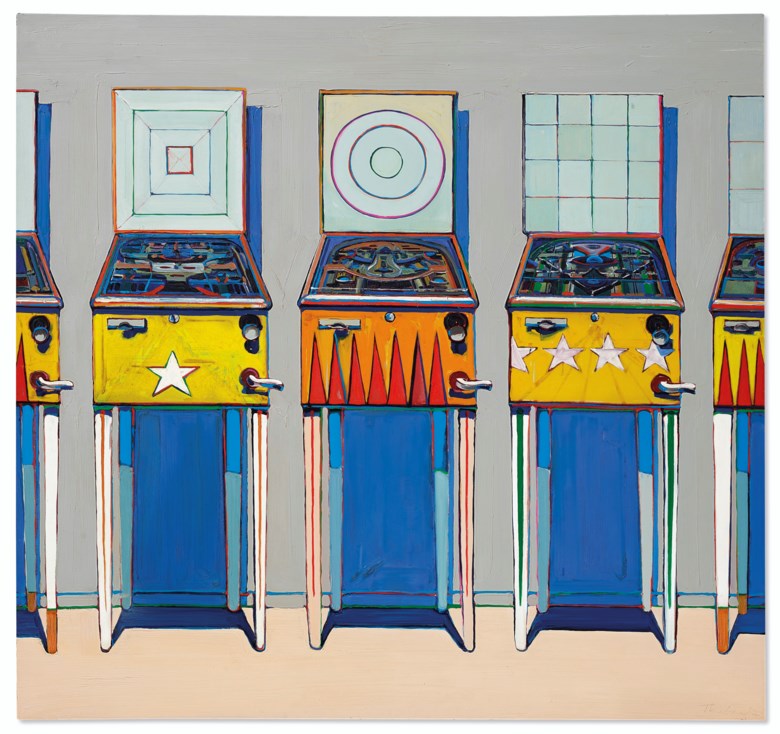

Wayne Thiebaud (b. 1920), Four Pinball Machines, 1962. Oil on canvas. 68 x 72 in (172.7 x 182.8 cm). Sold for $20,137,500 in ONE: A Global Sale of the 20th Century on 10 July 2020 at Christie’s in New York. © 2020 Wayne Thiebaud / Licensed by VAGA at Artists Rights Society (ARS), NY
Understood on its own terms and against developments of the past few months, this auction – and those accompanying headline sales at Sotheby’s and Phillips in recent weeks – should be seen as an unqualified success. The relay format was unusual, more specifically as a successful experiment which should not be repeated. Auctioneers are hubristic, demanding creatures and four competing for attention was a distraction. A starting delay of nearly 50 minutes, while clearly unintentional, was likewise an unforced error. Similarly, fielding bids from the book, online, the phones and (very) limited saleroom attendance, simultaneously, from four locations, works – but not well.
Online selling has clearly come of age, both in terms of the prices paid and the audiences reached (a reported 80,000 globally, with some 60,000 from Asia via social media platforms according to Christie’s). But while virtue has been decisively fashioned from necessity, bigger volumes and lower price points must return. Crunching so much of the auction season into one ultra-conservative, super blue-chip, defensively hedged sale will not sustain the fine art departments at Christie’s, or indeed any of the major auction houses, for long. We eagerly await the notoriously tricky second album in the autumn season.
Image Credits: Christie’s
FURTHER READING
- Philip Hoffman Talks with Bloomberg About Asian Art Market
- Asia’s Collectors Are Still Eager to Buy, But Only If It’s the Best
- The Financial Times Speaks with Patti Wong about Asian Art Market
Monday 29th June saw a landmark moment in which Sotheby’s consolidated their delayed New York May auctions into one 74-lot, 5-hour mega auction. Consisting of three consecutive sales, the Ginny Williams Collection, Post-War & Contemporary Art, and then Impressionist and Modern sales, eventually ending in the early hours of the morning for Europe.
Overall Sotheby’s response to the pandemic was impressive. Auctioneer Oliver Barker took bids from the rostrum in an empty room in London via screens with socially distanced specialists on the phones in New York, Hong Kong, and London alongside online bids. Their format looked remarkably smart and professional and Barker adeptly navigated this ground-breaking hi-tech format with aplomb. The most effective was a split screen offered when bids were being accepted from multiple locations and bidders.
We also saw online bidding reaching new heights with a record for an online auction purchase for the Basquiat work on paper at $13.1m hammer ($15.2m incl. premium). Although not the winning bid, we noted that the same online bidder (reportedly from China) also bid up to $73.1m for the Bacon triptych, a new level for online bidding, notably his increments were only allowed at $100,000. As our specialist, Guy Jennings commented in the New York Times post-sale: “As a result of this sale we may see much more confident online bidding at a higher level than we’ve seen before. There used to be a ceiling of a few hundred thousand on internet bids.”
The Bacon eventually sold to Sotheby’s New York head Grégoire Billault’s client on the phone for a $74m hammer ($84.6m with fees) after 10 minutes of bidding. A number of lots markedly saw the hammer fall rather slowly, which meant an unusually lengthy sale, no doubt caused by this new multi-screen format.
Overall, unsurprisingly the sale totals were down from last year, consignment must have been extraordinarily difficult during this period. However, the sell-through rates were extremely strong and several artist records showed encouraging prices for deserving works, most notably Helen Frankenthaler’s new auction record of $7.9m (incl. premium) for a vibrant 4-meter 1975 painting, more than doubling her previous record. From our team, Morgan Long, our Managing Director, speaking to Barron’s prior to the auction had noted the “fantastic grouping” of Latin American art, which ultimately saw 5 new artist records, including that for Wifredo Lam at $9.6m (incl. premium) and the female Surrealist Remedios Varo at $6.2m (incl. premium).
This format was an imaginative and professional response to selling art at auction in the current difficult climate and certainly showed that even the most expensive works can be sold in this environment. We do not, however, feel that it is the future. Despite Sotheby’s great efforts the format was very slow and lacked any sense of theatre. Live sales will return but for the time being, we must be grateful to Oliver Barker and the whole Sotheby’s team.
Further Readings
Luogo E Segni
Punta Della Dogana: 24 March – 15 December 2019

The exhibition takes its title from a painting by Carol Rama included in the exhibition. The show brings together over one hundred works, by thirty artists, that establish a particular relationship with their urban, social, political, historical, intellectual setting. Highlights include a signature beaded curtain installation by Felix Gonzalez-Torres, and an array of Roni Horn’s iconic frosted blue glass lozenges.
PITTURA/PANORAMA: Paintings by Helen Frankenthaler, 1952–1992
Museo di Palazzo Grimani, Venice: 7 May – 17 November 2019
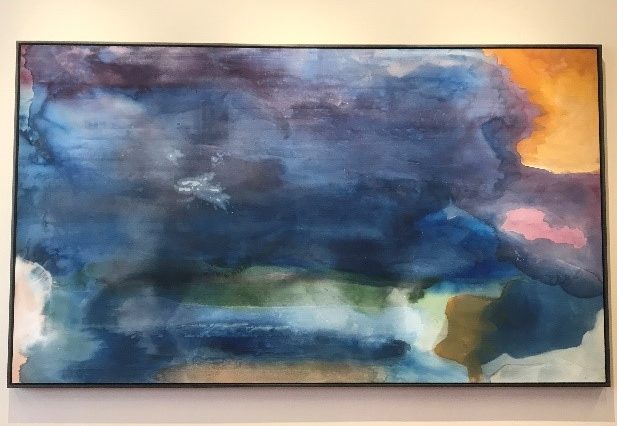
Abstract Expressonist Helen Frankenthaler’s famed colour-stained canvases have not been shown in Venice since 1966, when they held pride of place at the U.S. Pavilion of the Venice Biennale. The current exhibition at Palazzo Grimani, an art institution that dates back to the 16th century, is particularly fitting given the inspiration Frankenthaler gleaned from Venetian artists of that same era. The exhibition, curated by John Elderfield, includes work from four stages of the artist’s career, organized to illustrate the evolution of her career. The show focusses on the relationship in the artist’s development of the pittura (painting) and the panorama: the interplay of works like easel painting, although made on the floor, and large, horizontal paintings that open onto shallow but expansive spaces.
Sean Scully: HUMAN
Church of San Giorgio Maggiore: 8 May – 13 October 2019

HUMAN is a solo exhibition of recent and new works by Sean Scully, presented in collaboration with the Abbazia di San Giorgio Maggiore. Curated by Javier Molins, the exhibition invites viewers to contemplate the link between the contemporary artist and the historic church. Scully presents his largest sculpture to date beneath the church’s central dome. Constructed from stacked frames, each wrapped in vibrant and varying colours of felt, the sculpture rises ten metres into the air like an elaborate Jacob’s ladder, leading the eye and spirit heavenwards through the Basilica’s dome. In the remaining spaces, the artist’s acclaimed Landline series are displayed alongside three new figurative portraits from a series entitled Madonna.
Baselitz – Academy
Gallerie dell’Accademia di Venezia: 8 May – 8 September 2019

Baselitz is the first living artist to have an exhibition at the Galleria dell’Accademia. The German artist is showing his feverish paintings and drawings, as well as deftly hewn figurative sculptures, ranging from across his more than 60-year career and including new work created specifically for the show. Baselitz’s oeuvre has always been about destabilising the image, most notoriously by turning it upside down. The Accademia exhibition aims to deepen our understanding of a familiar artist, Baselitz emerges nuanced, playful, wide-ranging. The show celebrates the infinite possibilities by which tradition, including that of Raphael & Giorgione, becomes inspiration for the acclaimed artist.
Edmund De Waal: Psalm
Canton Scuola Synagogue / Ateneo Veneto: 7 May – 29 September 2019

dmund De Waal’s Biennale collateral exhibition is in two parts. Collectively entitled psalm, they take place at the Canton Scuola, a 16th-century synagogue in the Ghetto Nuovo, and at the nearby Ateneo Veneto. The former is based around literature and the latter featuring his trademark porcelain vessels. One of five synagogues in the Venetian Ghetto, the Canton Scuola is part of the Jewish Museum and for the first time is allowing art in its Women’s Gallery. Twelve of de Waal’s vitrines holding white porcelain, marble and gold line its walls.
At Ateneo Veneto the installation consists of a library housing 2,000 books by exiled writers. Visitors are encouraged to read and write in the books, most of which are in translation. De Waal has inscribed the names of lost libraries on the exterior of the specially built structure, which will be presented in Dresden from November to February 2020, followed by the British Museum.
Jannis Kounellis
Fondazione Prada: 11 May – 24 November 2019

The first major survey of Jannis Kounellis since his death in 2017 is on view at the Fondazione Prada at Ca’ Corner della Regina in Venice. Kounellis was one of the leading figures of Arte Povera, the term coined in 1967 by the curator Germano Celant to describe a group of young Italian artists who rejected traditional processes and materials. Celant organised the exhibition bringing together 70 works dating from 1958 to 2016, across the three floors of the 18th century palazzo.
GHANAIAN PAVILION
GHANA FREEDOM: El Anatsui, Ibrahim Mahama, Felicia Abbas, Lynette Yiadom-Boakye, John Akomfrah, Selasi Awusi Sosu
VENUE: Arsenale
Ghana’s first national pavilion is one of the most celebrated in the whole Biennale. The pavilion is designed by David Adjaye as a labyrinth of cellular spaces built in ochre Ghanaian soil, still smelling of the earth, in which dialogues between different generations, media, diaspora and Ghana-based artists coalesce. The title of the pavilion is a reference to the song composed by E.T. Mensa on the eve of the country’s independence in 1957; Ghana became the first sub-Saharan country to free itself from colonial rule.

Curated by Nan Oforiatta Ayim the space includes largescale installations by El Anatsui and Ibrahim Mahama; portraits by Ghana’s first known female photographer Felicia Abbas stand opposite the painter Lynette Yiadom-Boakye; the heavyweight filmmaker John Akomfrah shows a newly commissioned three-channel film installation; and a film-sculpture from Selasi Awusi Sosu.
INDIAN PAVILION
Our Time for a Future Caring: Nandalal Bose, MF Husain, Atul Dodiya, Jitish Kallat, Ashim Purkayastha, Shakuntala Kulkarni, Rummana Hussain and GR Iranna
VENUE: Arsenale
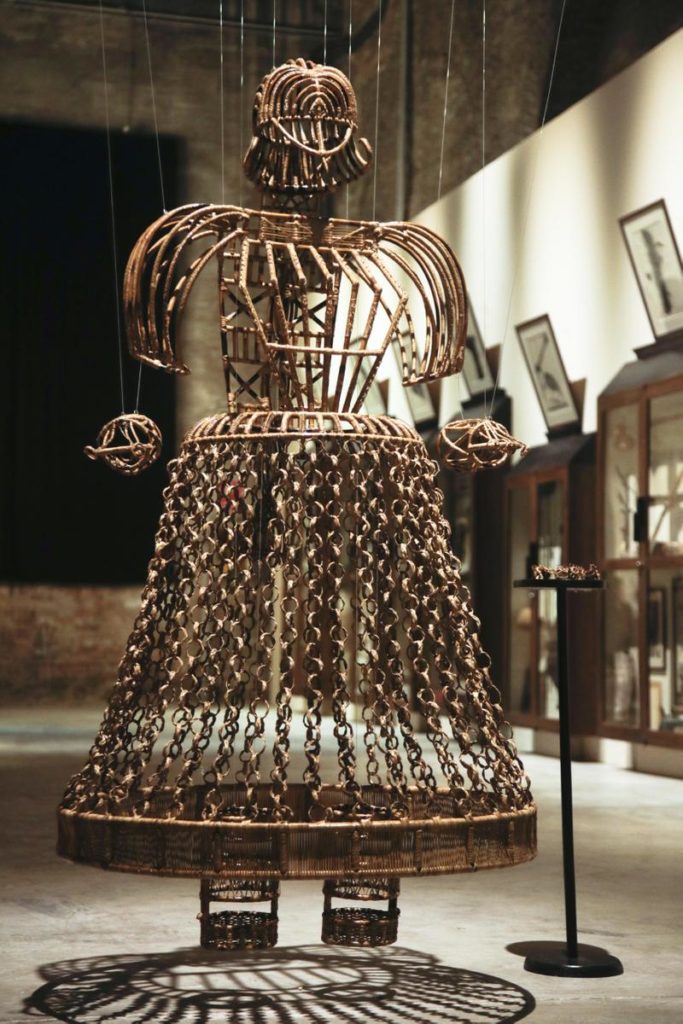

Returning after an eight year hiatus, India’s compelling group presentation addresses Gandhi’s legacy, beginning with Nandalal Bose’s posters for the 1938 Haripura Congress. In Broken Branches (2002), Atul Dodiya has recreated the old wooden cabinets found in the Gandhi museum in Porbandar, filling them with prosthetics, books, tools and weaving in personal items, while GR Iranna has covered one of the walls with hundreds of wooden padukas for his work Naavu (We Together) (2012), which refers to Gandhi’s choice of wood slippers—he rejected leather—and the power of collective marching. Jitish Kallat’s Covering Letter, projecting a plea for peace sent by Gandhi to Hitler on a curtain of descending mist through which audiences walk, simultaneously inhabiting and dissipating the text, is another key highlight. The pavilion theme marks the 150th anniversary of the birth of the Indian independence leader.
LITHUANIAN PAVILION
Sun & Sea (Marina): Rugilė Barzdž iukaitė, Vaiva Grainytė and Lina Lapelytė
Venue: Marina Militare, Calle de la Celestia, Castello
From 10am to 6pm every Saturday until the end of October, the Lithuanian pavilion is offering the spectacle of a beach of holidaymakers singing an “opera-performance” in a building that still belongs to the Arsenale’s military zone. The project is the work of theater director Rugilė Barzdžiukaitė, playwright Vaiva Grainytė, and composer Lina Lapelytė. It first debuted at Vilnius’s National Gallery of Arts in 2017 in Lithuanian and was adapted into English for the biennale, the pavilion is the 2019 recipient of the Golden Lion for Best National Participation.

Audience members become voyeurs, gazing down from balconies at the sandy stage set, where performers dressed in bathing suits and surrounded by seaside paraphernalia (lunch boxes, Sudoku, colouring books), casually sprawl on their towels and sun loungers. Their stream-of-consciousness libretto, alternating between solo songs and group choruses, is poetic, strange and often comic. But this microcosm of humanity comes with a barbed ecological message for the age of climate emergency.
PORTUGUESE PAVILLION
Leonor Antunes: a seam, a surface, a hinge or a knot
Venue: Palazzo Giustinian Lolin, San Marco, 2893

Leonor Antunes’ work in Palazzo Giustinian addresses the language and histories of Venetian Modernism. The artist begins with a black cork floor on the androne, the lowest level of the Grand Canal palazzo, dotted with brass squares. It is inspired by a Carlo Scarpa mosaic and lit by dramatically shaped lights designed by Egle Trinacanato, the first woman to graduate from Venice’s architecture school. Upstairs are partitions reaching up to the ceilings, echoing the rhythms of their wooden beams. Punctuating the space are tubular structures supporting tangled leather cords and woven screens and cooly minimal lights made in Murano glass. The evocation of history and sensitive response to the surrounding language of the palazzo and its furniture, makes for a poetic and evocative presentation of sculptures.
US PAVILION
Liberty/Libertà, Martin Puryear
Venue: Giardini

Martin Puryear’s pavilion entitled Liberty consists of eight sculptures that aim to present liberty as a universal, rather than an American, right. A significant work which presents a white column speared by a shackled iron stake is dedicated to Sally Hemings, Thomas Jefferson’s African-American slave and “concubine” who worked on his Virginia plantation. Other sculptures include a pair of wagons on a tilted plinth, evoking the precarious journeys of the American pioneers, as well as the present-day migrants maligned by the current US President.
FRENCH PAVILION
Deep See Blue Surrounding You: Laure Prouvost
Venue: Giardini

Visitors to Prouvost’s pavilion enter by the back door and are met with a rubble-filled basement, allegedly the start of the artists’ plans to dig a hole between the French and British pavilions. They then journey through a surreal sculptural seascape of marine creatures in Murano glass, cigarette butts and defunct mobile phones before plunging into darkness—the screening space is modelled on the belly of an octopus. The slipstream of watery images continues in the film as Prouvost’s characters make their way from the suburbs of Paris to Venice and the pavilion itself.
BRITISH PAVILION
Cathy Wilkes
Venue: Giardini

Cathy Wilkes’s sparse domestic installation of mannequins, lace scraps, diminutive vases of flowers, washing-up bowls and fragments of plastic limbs, is a meditation on austerity Britain, growing ever smaller in global significance. Tiny figures, with white discs for heads and distended grey bellies, reflect children of poverty and hunger. A mother of sorts is evoked in the stark white arms that rise out of a basin, as if petrified in the constant act of washing up, and in the headless figure in a green 30s dress that stands upon feet of clay. Wilkes presents a strong sense of dignity, restraint and coherence not to shock or amuse but inspire contemplation and reflection.
With ninety national pavilions, two group exhibitions in the Giardini and Arsenale respectively, and over twenty collateral exhibitions, there is an overwhelming amount of art to see at this year’s 58th edition of the Venice Biennale, running from May – November 2019. Below are The Fine Art Group’s highlights from one of the most influential art events of the year.

MAY YOU LIVE IN INTERESTING TIMES
EXHIBITION HIGHLIGHTS
The title curator Ralph Rugoff chose for his 2019 edition of the Venice Biennale is May You Live In Interesting Times. The phrase has a suggestive backstory: It is a fake Chinese proverb, first uttered by a British diplomat in the context of the rise of fascism in Europe. The exhibition is a response to the instabilities and challenges of the era, from the surge towards right-wing politics and climate change to artificial intelligence, fake news and surveillance.

The exhibition is entirely contemporary, with almost all works made since 2010, and nearly half the artists aged under 40. The comparatively reduced roster of 80 artists are exhibited simultaneously at the Arsenale as ‘Proposition A’ and the Giardini under ‘Proposition B’, which aims to spotlight a different side of each artist’s practice. Sometimes it offers a work that complements or completes a project in the other section, however on occasion it offers more of the same but in a new environment. Encouragingly for the first time half of the artists are women and all are alive.
Overall themes of the Biennale include American race relations, the looming dangers of climate change, human relations to technology and Artificial Intelligence. Highlights that cover these aspects include Cyprien Gaillard’s L’Ange du Foyer, a multicoloured hologram of the winged, clawed, fanged spirit in Max Ernst’s Fireside Angel, painted in fear of fascism in 1937, which darts and pounces about the Giardini’s shadowy, domed, mirrored central gallery.
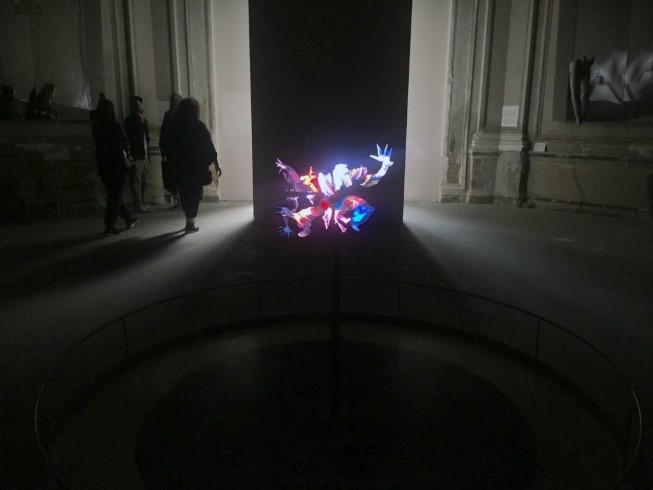
Christian Marclay’s impressive new 48 War Movies layers movies featuring conflicts from the American civil war to Iraq, on top of one other with just the outer edge of each visible, and all the soundtracks playing simultaneously, on shrieking infinite repeat, chaotic and endless, as war itself.
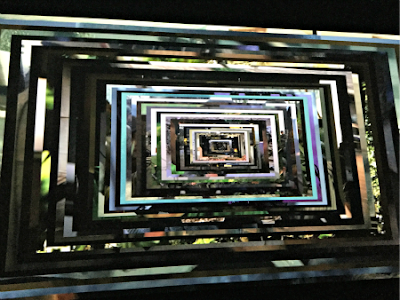
Michael Armitage’s most recent paintings, executed in the period leading up to Kenya’s 2017 elections, depict carnivalesque scenes in a cacophony of disrupted surfaces and tropical palettes that hover between vitality and threat. They re-appropriate western Modernism’s exotic tropes to express 21st-century black experience with emboldened success.
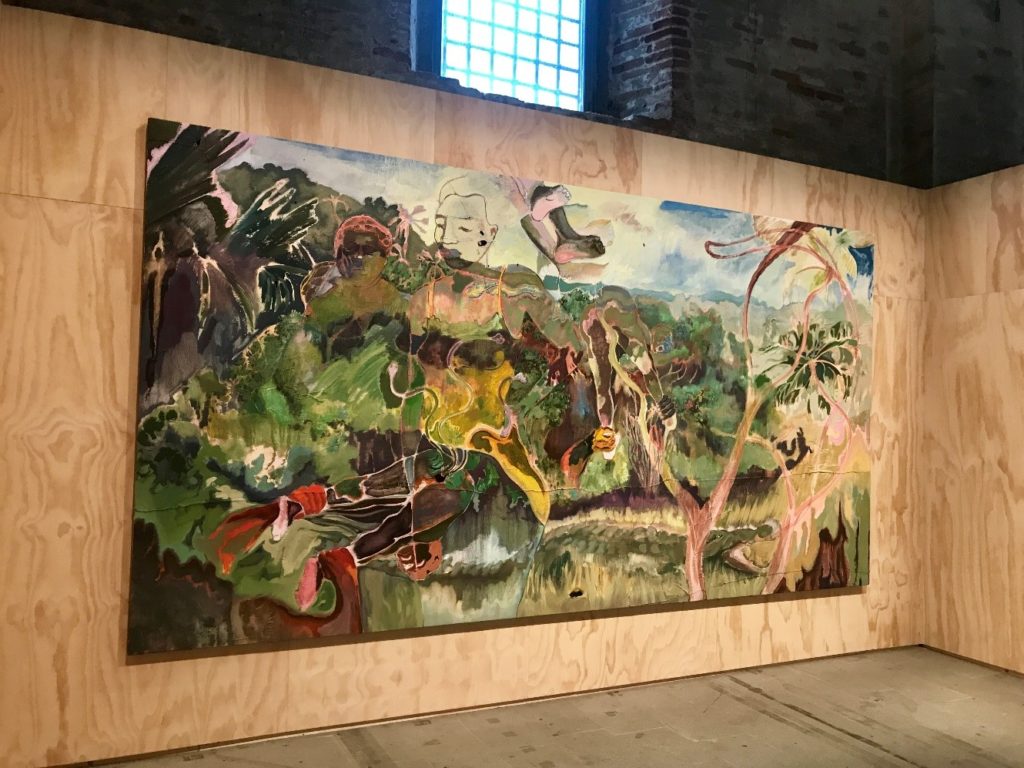
South African photographer Zanele Muholi’s self-portraits in various breath-taking costumes made by the artist, beautifully punctuate both the Arsenale and Giardini exhibitions.
Amongst the group of Njideka Akunyili Crosby works on show, the series of new portraits of herself and her family emerge as the most exceptional.
Henry Taylor’s submissions include scenes of life in modern America: a white business executive being hauled off in handcuffs, a group of black women watching the funeral of a victim of the bombing of the 16th Baptist Church in Birmingham, Alabama, in 1963.
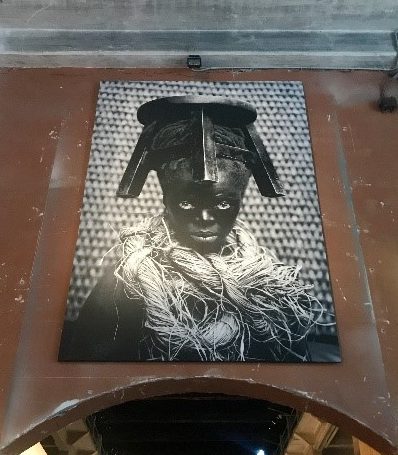
Whilst the exhibition rightly gives overdue space to once side-lined kinds of identities within the Euro-American art industry; on the other hand, it is freighted with the market forces and trends that are propelling these artists forward. Other commercial inclusions such as Carol Bove’s striking abstract sculptures and George Condo’s largescale ‘psychological cubist’ paintings, currently staples at all international art fairs, prove that the Biennale is still very much in tangent with the art market. Despite this, the exhibition forcefully declares art’s engagement with present realities and its ability to push forward from traditional forms.
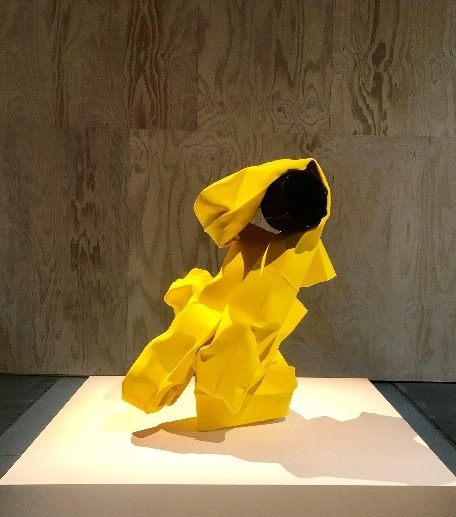
What ultimately emerges from Rugoff’s “interesting times” is a shipwreck of political and cultural stabilities – migrant tragedies, proliferation of repressive regimes, new inequalities- although the best share determined optimism and resistance. The most successful works express a sense of energy, the feeling that art in our globalised, digitally emancipated times has gained a momentum that will power it forward whatever the fates of individuals or nations.
$2 billion worth of art was sold during the New York May 2019 sales across 10 sales of Impressionist, Modern, and Contemporary art at Christie’s, Sotheby’s and Phillips, which is up $100 million from last year’s May 2018 sales totals, showing signs of a healthy and strong market.
IMPRESSIONIST & MODERN ART SALES
Both sales turned in “very solid results,” says Guy Jennings, an Impressionist and Modern specialist with The Fine Art Group…there’s “a lot of money chasing this kind of material,” Jennings says. “It’s a good market.”
CHRISTIE’S IMPRESSIONIST & MODERN ART EVENING SALE
Christie’s Impressionist & Modern Art Evening sale totalled $343.4m ($399m with premium) which sat comfortably within the presale estimate of $287.5m – $401.8m. Of the 63 lots offered, 54, or 86 percent, were sold.
The top lot of the sale was a still life by Cézanne, Bouilloire et fruits (1888–90) from the collection of Si Newhouse. Estimated in the region of $40m with feverish bidding, the work was eventually won by Rebecca Wei, president of Christie’s Asia, selling for $52m (hammer), having been purchased by the owner in 1999 for $29.4m.
Five blue-chip pieces from the Newhouse estate accounted for $100.1m, more than a quarter of the sale total. Another of the star lots from this selection included Van Gogh’s Arbres dans le jardin de l’asile, painted in Saint Rémy in 1889, which was estimated in the region of $25m. With at least five bidders on the work, it eventually sold for $33m (hammer). It was announced before the sale that both the Cézanne and the Van Gogh had new third-party guarantees in place.
New auction records were set for works by Balthus and Pierre Bonnard. The former selling for $19m (hammer) which more than doubled the previous record of $9.9m set at Christie’s New York in November 2015. Pierre Bonnard’s La Terrasse ou Une terrasse à Grasse (1912), from the Drue Heinz collection, solicited significant demand with bidding opening at $3.8m before hammering down at $16m. The previous auction record for a Bonnard was $11.6m at Christie’s London in February 2011.
SOTHEBY’S IMPRESSIONIST & MODERN ART EVENING SALE
Sotheby’s Impressionist & Modern Art Evening Sale totalled $301.6m ($349.9m with premium) against a pre-sale estimate of $252.6m – 353.2m. Fifty-one of the 56 works consigned to the sale found buyers, securing an impressive 91 percent sell-through rate. Despite some striking individual results nearly half the lots in the auction hammered beneath their low estimates highlighting some volatility in the Impressionist & Modern market.
Amongst the bought in lots was La Juenesse de Bacchus by French Academic painter William Bouguereau, an unusual inclusion in an Impressionist & Modern evening sale, and accordingly failed to find a buyer against its estimate of $25 – 35m.
The top lot of the evening, and the week, was Monet’s Meules (1890) selling for 44 times its 1986 price at $107.6m (hammer), the most expensive Impressionist work to ever sell at auction. Another key lot was Pablo Picasso’s 1962 canvas Femme au chien, offered by a Japanese collector and held for the last 29 years, the painting sold for $48m (hammer) against an estimate of $25 – 30m, with no guarantee.
Whilst Sotheby’s sale total was lower than Christie’s, the sale did outperform last year’s May sales total of $299.5m ($318m with premium). Significantly less lots were offered with guarantees indicating confidence in the market, however this shift attests to the varying prices with several lots selling beneath their low estimates.
POST-WAR & CONTEMPORARY ART SALES
CHRISTIE’S POST-WAR & CONTEMPORARY ART EVENING SALE
Christie’s Post-War & Contemporary Art Evening Sale totalled $468m ($538.9m with premium) against a presale estimate of $422.3 – 605.2m. Of the 56 total lots offered, 51 of them, or 91 percent, sold. The private collection of Robert and Beatrice Mayer achieved $157m, while works belonging to the late publishing magnate S.I. Newhouse accounted for $115m of the sale total, indicating the continued importance of estates in propelling strong sales totals.
The breakaway lot was Robert Rauschenberg‘s seminal silkscreen painting Buffalo II (1964), which after heated bidding sold to Sara Friedlander’s client for $78m hammer ($88.5m with premium) against an estimate of $50m, momentously surpassing the artist’s previous auction record of $18m. Other trophy lots included Jeff Koons’ stainless steel Rabbit (1986), estimated at $50-70m. Chased by 6 bidders, the work eventually sold to dealer Robert Mnuchin for $80m ($91m with premium) which exceeded the former Koons record of $58.4m and returned him to his post as the most expensive living artist, which he briefly lost to Hockney last year. Reportedly the end buyer was mega collector Steve Cohen.
“I think there was always going to be one which didn’t garner the same level of interest, and the Warhol just couldn’t hold up to the Rauschenberg and Koons,” Long says.
-Morgan Long, Senior Director: Barron’s Newspaper
The Warhol market proved soft with Double Elvis, whose $48m hammer price was below the estimate of $50 – 70m, with scant bidding, likely selling to the guarantor. Similarly, Early Colored Liz (1962) sold to Gagosian for $16.8m hammer against an estimate of $20 – 30m, demonstrating lack of demand at the top end of the market. Meanwhile Louise Bourgeois‘s Spider (conceived in 1996, cast in 1997), estimated at $25 – 35m, sold to Xin Li for an auction record price of $28m ($32m with premium). Other records included Larry Rivers ($1.2m), Frank Stella ($28m), Daniel Buren ($2.1m), and Jonas Wood ($4.9m).
PHILLIPS 20TH CENTURY & CONTEMPORARY ART EVENING SALE
Phillips 20th Century & Contemporary Art Evening Sale totalled $85.3m ($99.9m with premium) against a presale estimate of $75.9 – 107.8m, with only one of the 43 lots failing to sell.
The top lot of the evening was Willem de Kooning’s, Untitled XVI (1976), which hammered at $8.8m ($10.3m with premium), towards the low end of the estimate. However, it was the younger contemporary artists whose work really soared throughout the evening. Examples include Dana Schutz’s painting Signing which sold for nearly quadruple its low estimate at $980,000. Swiss artist Nicolas Party’s landscape sold for $608,000 against an estimate of $100,000 – $150,000 and Jordan Casteel’s Self Portrait sold for $237,500 from an estimate of just $60,000 – 80,000.
From the 15 works offered from the Fiterman collection, one of the most valuable consignments Phillips has secured in its history, three sold above estimate but overall the group performed solidly within expectations. The collection’s top lot was Horse and Rider (1976) by Roy Lichtenstein, selling for just below the $6m low estimate with fees.
Over half the works in the sale were guaranteed, including Helter Skelter II (2007) by Mark Bradford which sold to the guarantor for $7.7m (hammer). The abstract collage is the companion piece to Helter Skelter I, which John McEnroe sold at Phillips last year for $12m, bought by The Broad collection it currently stands as the record for the artist.
SOTHEBY’S POST-WAR & CONTEMPORARY ART EVENING SALE
Sotheby’s Post-War & Contemporary Art Evening Sale totalled $291.6m ($342m with premium) against a presale estimate of $244.6 – 351.4m. 56 of the 63 lots sold, with an 89 percent sell through rate.
With 79 percent of lots selling for above or within their estimates, the auction included records for seven artists, ranging from established artists Carl Andre, Lee Krasner, and Kenneth Noland to contemporary figures including Charles Gaines, Barkley L. Hendricks, Rashid Johnson, and Dana Schutz. The Schutz notably soared through its estimate of $300,000 – 400,000 hammering at $2m ($2.4m with premium). This record was swiftly increased from $980,000 when Phillips sold her Signing (2009) just 90 minutes earlier.
Francis Bacon’s Study for a Head (1952) was the sale’s top lot. From the collection of Richard E. Lang and Jane Lang Davis, the work sold for well above its $30m high estimate to make $44m ($50.4m with premium) to dealer Chris Ekyn who was bidding from the floor. Less dramatic was the sale of SFMOMA’s Rothko which sold neatly within its estimate for $43.8m ($50.1m with premium) to a client of Amy Cappellazzo.
SUMMARY
The highest price paid for a single artwork across all collecting categories in New York this sales cycle, was the $110.7m (incl. premium) Monet Meules painting sold by Sotheby’s, however overall Christie’s sales totals trumped Sotheby’s & Phillips across both categories.
The Impressionist & Modern Sales were down from the May 2018 sales however this was due to the Rockefeller single owner sale. Compared to November 2018 totals were up 24.3% with strong demand for top lots with estimates over $10m. Sales values in the Post-War & Contemporary category were up 7.6% from May 2018 sales.
Despite multi-million dollar records being set at the top end for Jeff Koons and Robert Rauschenberg, younger generation artists saw the most significant price jumps. Amongst the lots that received the most competitive bidding were works by Dana Schutz, KAWS, Nicholas Party, Jonas Wood, Rashid Johnson, Lynette Yiadom-Boakye and Jordan Casteel. In total these artists raised $22.9 million against a pre-sale mid-estimate of $11.6 million (based on 14 lots). The next several sale cycles will attest to the sustainability of this market attention and speculation and these artists will be closely watched.
PRESALE ESTIMATES & SALES RESULTS
